
Península de Zapata and Vicinity
RESERVA DE LA BIOSFERA CIÉNAGA DE ZAPATA
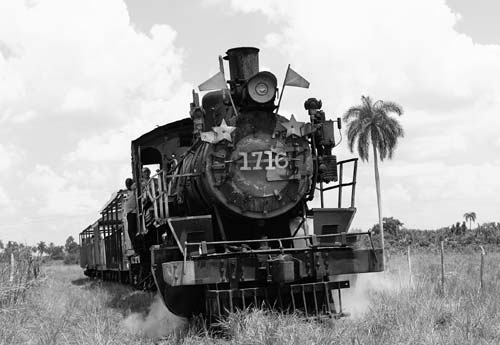
Created only in 2011, the province of Mayabeque lies between Havana and Matanzas. It’s almost predominantly agricultural. Its northeast is scalloped as the Valle de Yumurí, a huge basin lushly cultivated with sugarcane. It is enfolded by a crescent of low mountains famed for their mineral springs.
Matanzas Province is a triptych of diverse appeal. Its north shore boasts some of the island’s finest beaches. The lodestone is Varadero, Cuba’s biggest beach resort, occupying the slender 20-kilometer-long Península de Hicacos: a mini-Cancún with almost three-quarters of all hotel rooms on the island. Betwixt Havana and Varadero is the namesake city of Matanzas, a once-wealthy sugar- and slave-trading port known as the Athens of Cuba for its literary and artistic vitality. Today, it is a center for Afro-Cuban culture.
Hills separate the coastal strip from a vast plain where red soils support sugarcane fields and citrus orchards that extend east into Villa Clara Province.
The southern part of Matanzas Province is taken up by the low-lying Península de Zapata, the Caribbean’s largest marshland system, harboring fantastic bird-life and a large population of Cuban crocodiles. In April 1961 the Zapata region was the setting for the Bay of Pigs invasion by Cuban exiles. Today the region is enshrined within Parque Nacional Ciénaga de Zapata, luring travelers keen on bird-watching, fishing, and a sampling of revolutionary history. There are pleasant beaches at Playa Larga and Playa Girón, both major landing sites for the CIA-inspired invasion.
The entire coastline from the Bay of Pigs (21° 45’) to Cienfuegos harbor (21° 50’) is strictly off-limits to boaters.
The Vía Blanca, or Circuito Norte, runs along the coast between Havana and Matanzas (102 kilometers), and thence to Varadero, 34 kilometers farther east. Many visitors make Varadero their main center for a vacation in Cuba. It has improved immensely of late—perfect if sun and sand are your main interests. Two or even three days relaxing on the beach here should suffice. Scuba diving is excellent, boat excursions are fun, and organized excursions to the timeworn historic city of Cárdenas and farther afield provide a sampling of Cuba’s broader pleasures.
The city of Matanzas appeals for its heritage of Afro-Cuban music and dance; for its faded colonial architecture highlighted by the restored Castillito de San Severino, with an important museum recalling the era of slavery; and for the Cuevas de Bellamar, full of dripstone formations. One day is more than adequate to explore the city.
Touristic sites are few in Mayabeque Province: The two exceptions are the uplands of Escaleras de Jaruco and the pretty beach resort of Jibacoa.
The Zapata region deserves at least a day’s visit. At Boca de Guamá, Cuba’s most important crocodile farm is open for visits. Bird-watchers and wildlife enthusiasts are in their element. Laguna del Tesoro and Laguna de las Salinas set a world standard for tarpon and bonefish angling. Scuba divers can dive a cenote (flooded sinkhole) while snorkelers can enjoy Caleta Buena. The Museo Playa Girón is worth the visit for Cuba’s take on the Bay of Pigs story.
When traveling east-west or vice versa, take your pick of the super-fast Autopista, which skips all towns and runs through flat agricultural lands from Havana to Santa Clara, or the winding Carretera Central, which runs north of and parallel to the Autopista, linking the city of Matanzas with Santa Clara and passing through dusty old country towns.
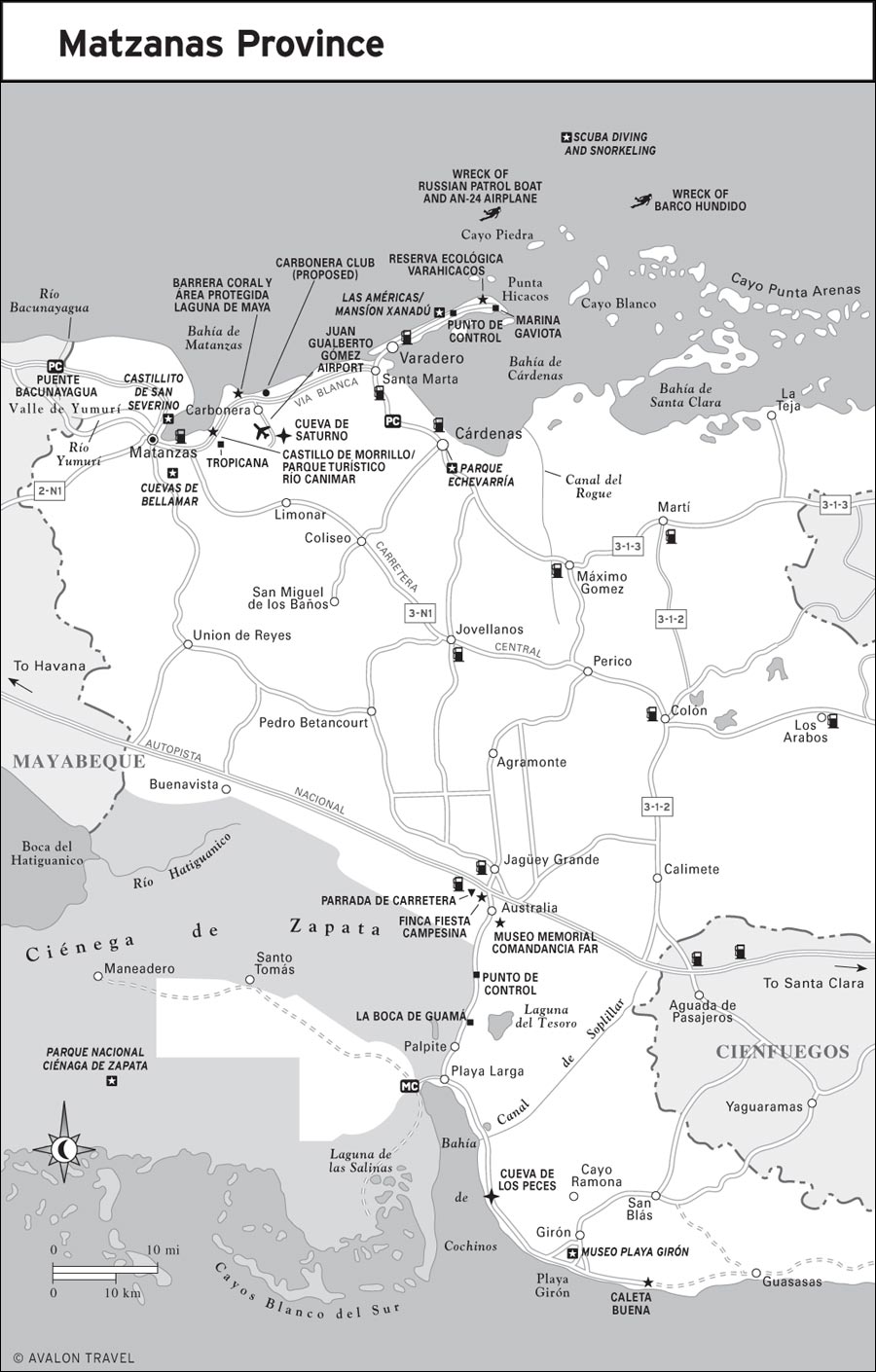
This funky town, 51 kilometers due south of Havana, was the site of the original city founded in 1515 by Pánfilo de Narváez and named San Cristóbal de la Habana. The settlers lasted only four years before uprooting and establishing today’s Havana on the north coast. Today Batabanó is an agricultural town.
About three kilometers south is Surgidero de Batabanó, a rundown hamlet of ramshackle wooden houses and of significance only as the port town from which ferries depart for Isla de la Juventud. There are a few casas particulares (ask around).
A bus to Batabanó’s ferry terminal departs Havana’s Terminal de Ómnibus (Av. de Rancho Boyeros, esq. 19 de Mayo, Plaza de la Revolución, tel. 07/870-9401) at 8am. Buy your tickets at the kiosk marked NCC, between gates 9 and 10 (Mon.-Fri. 8am-noon and Sat. 8am-11am, CUC2.10). You must show your passport when buying a ticket.
A train serves Surgidero de Batabanó from Havana’s Estación 19 de Noviembre (Calle Tulipán and Hidalgo, tel. 07/881-4431 or 07/881-3642) at 5pm (CUC1.80). The return train to Havana departs Surgidero at 5:30am from the rail station (tel. 047/58-8855) at the end of Calle 68.
The rolling Escaleras de Jaruco (Jaruco Staircases) rising east of the Autopista are popular among habaneros escaping the heat for walks and horseback rides. The hills are composed of limestone terraces denuded in places into rugged karst formations laced with caves and protected within Parque Escaleras de Jaruco (tel. 047/87-3266). It has horseback riding on weekends.
Take the turnoff for Tapaste from the Autopista, about 15 kilometers east of Havana. The road rises to El Arabe (tel. 047/87-3292, Thurs.-Sun. noon-5pm), a restaurant in Mughal style with fabulous views.
The quaint village of Jaruco has a delightful hilltop plaza with a church, Parroquia San Juan Bautista, dating from 1778.

East of the Playas del Este, the Atlantic shore is hemmed by low hills. Following the coast road (Route 2-1-3), you’ll pass small oil derricks bobbing languidly atop the cliffs. Santa Cruz, some 30 kilometers east of Havana, is a ramshackle industrial and oil-processing town steeping in a miasma of photo-chemical fumes. Cuba’s largest rum factory, Fábrica Cubarón, also known as Ronera Santa Cruz, is here, producing the famous Havana Club rums. No visits are permitted.
About four kilometers south of Santa Cruz and worth the detour is the community of Camilo Cienfuegos, formerly called Hershey and built as a model town by the Hershey chocolate company, which owned the now-derelict Central Camilo Cienfuegos sugar mill. Hershey’s town had a baseball field, movie theater, an amusement park, the Hershey Hotel, and wooden homes for workers. The facilities still stand, forming a kind of lived-in museum. The mill closed in 2002. The Hershey Train stops here between Havana and Matanzas. The old engine #21203 is now a museum piece at the station.
About one kilometer east of Camilo Cienfuegos, the Jardines de Hershey occupy a valley and hillside. Paths wind through the somewhat wild riverside gardens.
This beautiful beach, also known as Playa Amarillo, about four kilometers east of Santa Cruz, extends east of the Río Jibacoa for several kilometers. A smaller beach—Playa Arroyo Bermejo—is tucked between cliffs at the mouth of the Río Jibacoa. The beaches are popular with Cubans, who are served by basic campismos (holiday camps).
Camera at the ready? Then take a deep breath for your stop at this bridge, 106 kilometers from Havana and 10 kilometers east of Puerto Escondido. The 313-meter-long bridge spans the Río Bacunayagua, which slices through the narrow coastal mountain chain. The Yumurí Valley rolls away to the south, fanning out spectacularly as if contrived for a travel magazine’s double-page spread.
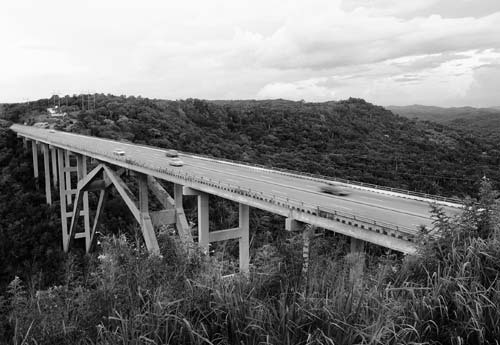
Puente Bacunayagua
The bridge is a favorite stop for tour buses and has a restaurant and mirador (lookout).
Budget-focused foreigners can stay at Campismo Los Cocos (Playa Jibacoa, tel. 047/29-5231, www.cubamarviajes.cu, CUC8 low season, CUC9 high season, including breakfast), which has simply furnished concrete cabinas (nine of higher standard for tourists) amid well-kept lawns; they have kitchenettes and modern bathrooms. There’s a swimming pool, game room, and basic restaurant. You’ll be among Cubans here, as you will at Islazul’s Villa Loma (Playa Jibacoa, tel. 047/29-5316, CUC20-60 per unit low season, CUC30-80 high season). The third-rate, cliff-top, holiday camp-style hotel has simply appointed and deteriorated two- to five-bedroom villas.
At the east end of the beach, Gran Caribe’s Cameleón Hotel Villa Trópico (Vía Blanca, Km 60, tel. 47/29-5205, reserve@clubtropico.co.cu, CUC29 s, CUC46 d low season, CUC70 s, CUC100 d high season) offers nicely furnished bungalows with modern bathrooms, plus water sports and other activities.
A more upscale option, the all-inclusive Breezes Jibacoa (Vía Blanca, Km 60, tel. 047/29-5122, from CUC100 pp), run by the Jamaican chain SuperClubs, is a splendid four-star resort. Its 250 spacious and tastefully decorated rooms and 10 suites center around a vast swimming pool. It has heaps of facilities. Reservations are required.
A couple of simple casas particulares (room rentals) and paladares (private restaurants) are a few minutes’ walk inland of Breezes Jibacoa.
The city of Matanzas (pop. 142,000) lies within the deep, 11-kilometer-long, five-kilometer-wide Bahía de Matanzas (more than 20 Spanish galleons lie at the bottom of Matanzas Bay, sunk by Dutch admiral Piet Heyn in 1628). The city was founded at the end of the 17th century on the site of an Indian village, Yacayo, and populated by settlers from the Canary Islands. In 1694 a castle—Castillito de San Severino—was initiated to guard the bay.
During the 18th century, Matanzas grew as a port city exporting beef, salted pork, coffee, and tobacco. During the mid-19th century, the region accounted for more than 50 percent of national sugar production. The city was a center for the importation of slaves and established itself as Cuba’s most important center of cult religions (Matanzas remains a potent center for Santería and other African-derived religions, and for Afro-Cuban music and dance). Many white citizens grew wealthy on the sugar and slave trades, and a fashionable café society evolved. In 1828 the citizens began Cuba’s first newspaper. A philharmonic society and a library were formed, followed by theaters, and the city quickly acquired its Athens of Cuba moniker.
Later, Matanzas was a battleground during the wars of independence and was bombarded by the USS New York. Today the bay is filled with oil tankers and freighters waiting to be loaded with sugar. Tall chimney stacks belong to a geothermal, a chemical factory (pouring out sulfurous fumes), and a paper mill that uses bagazo (crushed cane fiber). Nonetheless, the town’s setting is pleasing, in the cusp of gentle hills.
East of the city, the Vía Blanca (Matanzas-Varadero Expressway) hugs the coast. Oil derricks by the water’s edge suck forth black gold from atop coral platforms.
Matanzas lies on the western and southern bayshore and is divided by the Ríos Yumurí and San Juan into distinct sections. To the north is Reparto Versalles, a late colonial addition climbing the gentle slopes. The predominantly 19th-century Pueblo Nuevo extends south of the Río San Juan along flatlands. The historic city center—Reparto Matanzas—lies between them and rises to the west. The 20th-century Reparto Playa, to the east, fronts the bay.
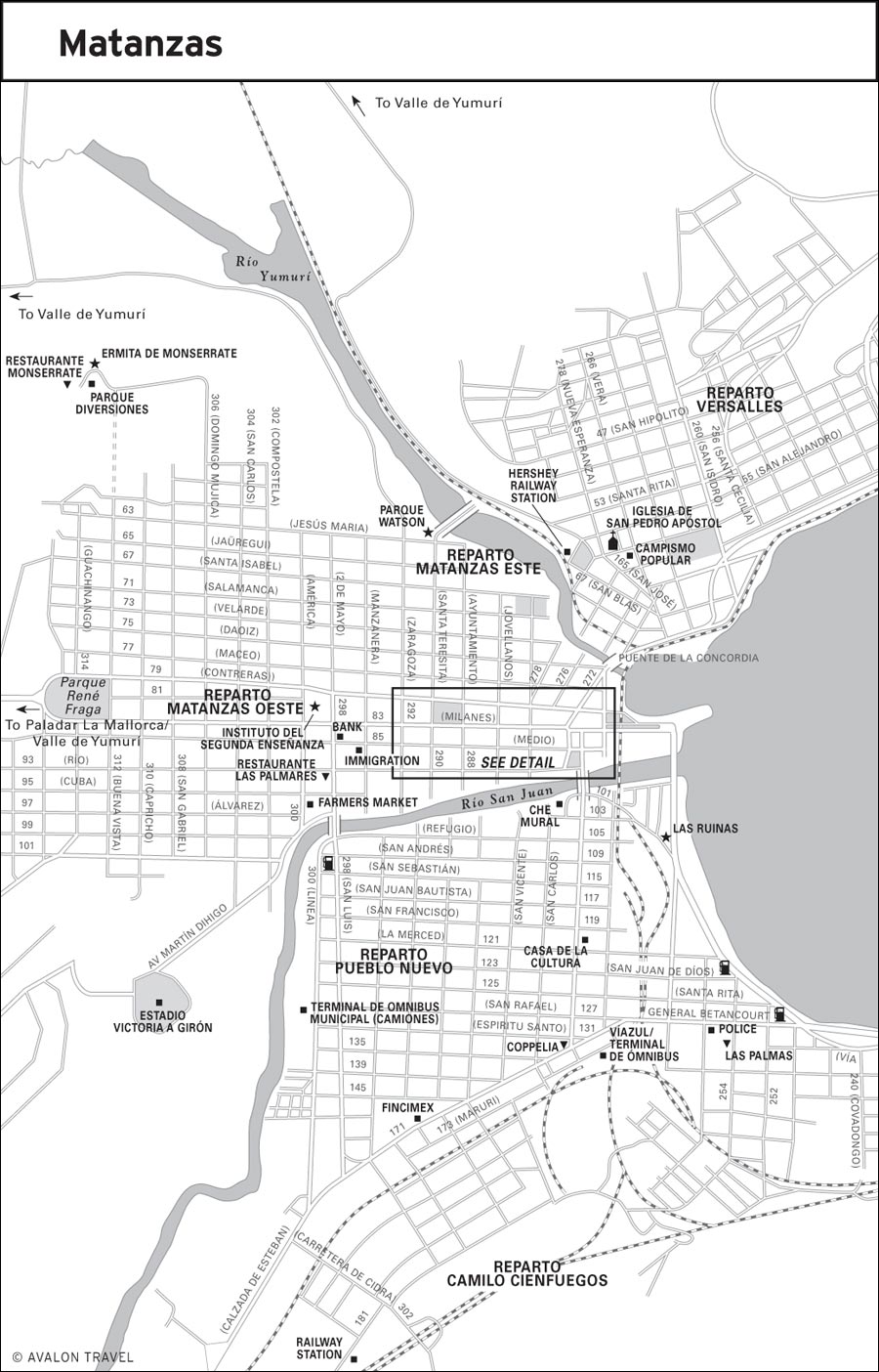

The Vía Blanca from Havana descends into town from the north and skirts the Reparto Playa bayshore as Calle General Betancourt (Calle 129) en route to Varadero.
The town is laid out in a near-perfect grid. Odd-numbered streets run east-west, even-numbered streets north-south. Many streets have both a name and a number; most also have two names, one pre- and one postrevolution. For example, Calle 79 is also called Calle Contreras, though locals still refer to it as Calle Bonifacio Byrne. Contreras and Calle 83 (Milanés) run west from the Vía Blanca six blocks to the main square, Plaza de la Libertad. Calle Santa Teresita (Calle 290) runs perpendicular to the west, and Calle Ayuntamiento (Calle 288) to the east. The first three digits of a house number refer to the nearest cross street.
For a fabulous view over town, follow Calle Contreras uphill westward from Plaza de la Libertad to Parque René Fraga. En route, turn right (north) onto Calle 306 and follow it to Ermita de Monserrate (Monserrate Hermitage), a mirador offering spectacular views.
The eight-kilometer-wide Valle de Yumurí is held in the cusp of 150-meter-high limestone cliffs—the Cuchillas de Habana-Matanzas—immediately west of Matanzas, from which it is separated by a high ridge. Two rivers, the Yumurí and Bacunayagua, thread their silvered way to the sea.
The old parade ground (once known as Plaza de Armas) is a pleasant place to sit under shade trees and watch the world go by. At its heart is the Monumento a José Martí, with life-size bronze figures of Martí and the Indian maiden breaking free of her chains. Buildings of architectural note include the much-deteriorated Casa de la Cultura, in the former Lyceum Club, and the Biblioteca in the former Casino España, both on the north side. The former city hall on Calle Ayuntamiento today houses the Poder Popular, on the east side.
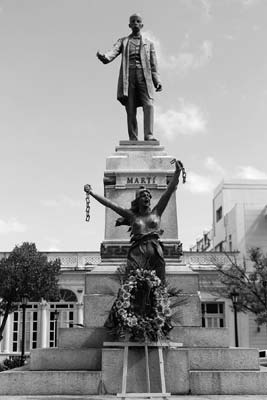
Monumento a José Martí
On the south side, the Museo Farmacéutico (Pharmaceutical Museum, Calle 83 #49501, tel. 045/24-3179, farmaceutico@atenas.cult.cu, daily 10am-5pm, CUC3) is a wood-paneled pharmacy dating from 1882, when a pharmacy—La Botica Francesa—was opened by a French pharmacist, Trilet. It functioned as such until 1964, when it metamorphosed into a museum preserving the store just as it was the day it closed, with salves, pharmaceutical instruments, and original porcelain jars neatly arranged on the shelves. Out back a laboratory contains copper distilleries. Note the bright red and orange vitrales. Originally they were red, white, and blue—the colors of France—but Spanish authorities insisted that they be replaced with Spain’s national colors. Ascend the Carrera marble staircase to the Sala Celia Triolet, displaying and selling stained-glass pieces, and the Museo de Arte Decorative, displaying period furnishings.
One block east, the Museo de Arte (Calle 9 #28007, e/ 280 y 282, tel. 045/29-0735, Tues.-Sat. 9am-5pm, Sun. 9am-noon, CUC1) displays art and antiques.
This cathedral (Calle 282, e/ 83 y 85, Mon.-Fri. 8am-noon and 3pm-5pm, Sun. 9am-noon), one block southeast of Plaza de la Libertad, was built in 1878. Today the opulently frescoed ceiling gleams. The curator has an office at the side of the church (Tues.-Sun.).
The tiny Plaza de la Iglesia fronting the church has a statue of local poet José Jacinto Milanés (1814-1863), whose former home is now the Archivo Histórico (Calle 83 #28013, e/ 280 y 282, tel. 045/24-4212).
The city’s other plaza of note is four blocks east of Plaza de la Libertad, at the junction of Milanés and Calle 270, immediately north of the Puente Calixto García over the Río San Juan. At its heart is a marble statue of an unnamed freedom fighter during the independence wars. The neoclassical Teatro Sauto (tel. 045/24-2721, Tues.-Sat. 9am-5pm, Sun. 2pm-4pm, CUC2 guided) was built in 1863 at the height of the city’s prosperity. In its heyday it attracted the likes of Sarah Bernhardt, Enrico Caruso, and Anna Pavlova. The three-tiered auditorium with circular balconies supported by thin bronze columns is heartbreaking in its dereliction but was undergoing a lengthy restoration at last visit.
On the plaza’s north side is the Palacio de Junco, a 1840 mansion housing the city’s Museo Histórico Provincial (Calles 83 y 91, tel. 045/24-3195, Tues.-Sat. 9am-noon and 1pm-5pm, Sun. 9am-noon, CUC2), tracing the city’s development. The antique furnishings, clocks, and weaponry are impressive.
South of the theater, the neoclassical fire station houses the Museo de los Bomberos (Mon.-Fri. 10am-5pm, Sat. 1pm-5pm), displaying antique fire engines; the oldest, from London, dates from 1864.
Facing the fire station is the Galería de Arte Provincial (Calle 272, Calles 85 y 91, Mon.-Fri. 9am-5pm, Sat. 10am-2pm, Sun. 9am-1pm, free). The Ediciones Vigía (Plaza de la Vigia, e/ 85 y 91, tel. 045/24-4845, Mon.-Fri. 8am-4pm, CUC1) produces handmade books in limited editions.
This restored fortress (Carretera del Puerto), completed in 1745 on the west side of the bay, is the most intriguing site in town, and still has cannons in situ. Slaves were landed here and held in dungeons, awaiting sale and transfer to sugar plantations. During the 19th century, Cuban nationalists were imprisoned here; according to a plaque, 61 patriots were executed—you can see the bullet holes in the moat on the south side of the castle.
Today, the fortress houses the excellent Museo de la Ruta del Esclavo (Carretera del Puerto, tel. 045/28-3259, Tues.-Sat. 9am-4pm, Sun. 9am-noon, entrance CUC2, camera CUC2). One room regales visitors with local pre-Columbian and colonial history. The Sala de Orishas is dedicated to Afro-Cuban religions and displays life-size figures of the orishas. A third exhibit is dedicated to slavery. It also has a gallery dedicated to Cuban artists Wilfredo Lam and Nelson Domínguez, whose works are infused with Santería mythology.
The castle stands at the east end of Reparto Versalles, accessed from downtown via the Puente de la Concordia, built in 1878 over the Río Yumurí with decorative Babylonian-style columns at each end. The region was settled last century by French-Haitian refugees and is pinned by the twin-towered Iglesia de San Pedro Apóstol (Calles 57 and 270).
These caves (Carretera a las Cuevas, tel. 045/25-3538 or 045/25-3190, Tues.-Sun. 9:30am-5pm, CUC5 for one-hour guided tour, cameras and videos CUC5), in the hills about three kilometers southeast of downtown, form one of Cuba’s largest cave systems. A 159-step staircase leads to more than 3,000 meters of galleries full of stalactites and stalagmites, including the 80-meter-long, 26-meter-high Gothic Temple, with shimmering flower-like crystal formations known as dahlias. A small museum describes the geological formations. Tours (45 minutes) depart at 9:30am, 10:30am, 11:30am, 1:15pm, 2:15pm, 3:15pm, and 4:15pm. Avoid weekends.
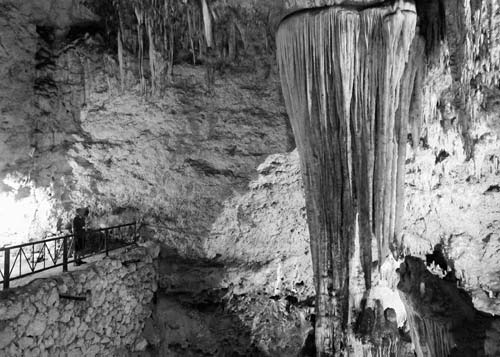
Cuevas de Bellamar
Bus #16 departs Calle 300 (esq. 83), and will drop you at Calle 226, from where it’s a 30-minute uphill hike along the road to the caves (cars will need to take Calle 254).
In mid-October, the city hosts the Festival del Bailador Rumbero, with performances by Cuba’s finest Afro-Cuban rumba bands, including the homegrown Los Muñequitos. The Festival del Danzón (tel. 045/24-3512) is a biennial held in November, with workshops and competitions of danzón and folk dance.
The barebones Casa de Danzón (Calle Medio #27405, e/ 280 y 282, tel. 045/28-7061) has programs Saturday at 8pm and Sunday at 2pm. Musicians also play the Casa de la Cultura Bonifacio Byrne (Calle 272 #11916, e/ 119 y 121, tel. 045/29-2709) most evenings.
Resembling a Boston Irish bar, the historic Taberna La Vigía (Calle 85, esq. Plaza de la Vigía, tel. 045/25-3076, 11am-11pm) is the best place to enjoy a chilled beer. Below, the basement El Sotano de Vigía nightclub (Mon.-Fri. 9:30pm-2am, Sat.-Sun. 6:30pm-2am) has a varied program spanning classical, Spanish, romantic, and contemporary music.
The hot dance spot on weekends is Artex’s open-air Las Palmas (tel. 045/25-3252, Mon.-Wed. noon-midnight, Fri.-Sun. noon-2am), a.k.a. “El Palacio” because it’s next to the Palacio de Los Matrimonios. It has live music nightly.
Las Ruinas (Vía Blanca y Calle 101, tel. 045/25-3387, 24 hours) has live music and disco Friday-Sunday at 9pm.
For Las Vegas-style cabaret, head to Tropicana Matanzas (Autopista Varadero, Km 4.5, tel. 045/26-5555, Tues.-Sat. 10pm, CUC35, including a half-bottle of rum). A separate karaoke bar with dance floor is the hottest ticket in town for hip locals (10pm-3am, CUC.2.50); the dancing here seems straight out of a hip-hop video.
Matanzas’s baseball team—the Matanzas—play at Estadio Victoria a Girón (Av. Martín Dihigo), one kilometer west of town, October-May.
Kids might get a minor kick at Parque Watkin (Calle 290 esq. 63, Tues.-Fri. 1pm-5pm and Sat.-Sun. 10am-6pm, CUC1), a small and desultory park displaying flamingos and other endemic Cuban species.
One block from Plaza Independencia, Hostal Alma (Calle 83 #29008 altos, e/ 290 y 292, tel. 045/24-2449, hostalalma@gmail.com, CUC20-25) is run by a pleasant lady. Three rooms have high ceilings, fans, fridges, and modern private bathrooms. The vast upstairs lounge has a balcony. Next door, and owned by the same family, is Hostal Azul (Calle 83 #29012, e/ 290 y 292, tel. 045/24-2449, hostalazul.cu@gmail.com, CUC20), a huge and delightful colonial home with four simply furnished rooms with small modern bathrooms.
Huge (and tasty) dinners are reason enough to stay at Casa de Roberto y Margarita (Calle 79 #27608, e/ 276 y 280, tel. 045/24-2577, CUC20), a colonial home with one spacious room with floor-to-ceiling windows opening to a courtyard.
It’s upstairs, but S Casa de Evelio e Isel (Calle 79 #28201, e/ 282 y 288, tel. 045/24-3090 or 5281-4966, evelioisel@yahoo.es, CUC20) gets my thumbs up. This condo home has two rooms furnished with good mattresses and modern accoutrements, including refrigerator, fan, TV, safe, and private hot-water bathrooms. Each has a balcony.
In the Reparto Playa district, Casa de Ana Beatriz (Calle General Betancourt 129/#21603, e/ 216 y 218, tel. 045/26-1576, CUC25) is a bayfront 1940s home with two spacious rooms with modern bathrooms. A rear garden gets the breezes. Nearby, S Hostal Villa Mar (Calle 27 #20809, e/ 208 y 210, tel. 045/28-8132 or 5296-9894, lictik87@gmail.com, CUC25) is a superb bargain. This gorgeous bayfront villa rents a small independent air-conditioned apartment in the rear ocean-view garden. A spiral staircase leads to a cove. Secure parking.
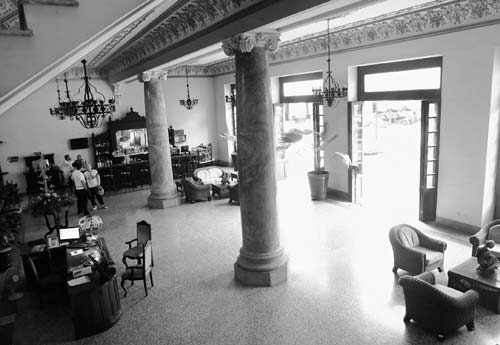
lobby of the Hotel E Velasco
Finally, Matanzas has a hotel! Hotel E Velasco (Calle Contreras e/ Santa Teresa y Ayuntamiento, tel. 045/25-3880, CUC41 s, CUC58 d low season, CUC43 s, CUC62 d high season), on Plaza de la Libertad, opened in 2011 with 17 rooms after being virtually derelict for years. Originally opened as a hotel in 1902, today it has been beautifully restored and has a gracious, bemarbled lobby. Guest rooms are graciously furnished. Standard rooms lack windows; four suites have balconies overlooking the plaza. Live music is offered in the atrium restaurant and bar. It has a cybercafé (CUC6 per hour) plus Wi-Fi (CUC8 per hour).
Matanzas’s best private restaurant is S Paladar La Mallorca (Calle 334 #7705 e/ 77 y 79, tel. 045/28-3281, Wed.-Sun. 12:30pm-10pm), hidden away atop the hill west of Parque René Fraga; turn right at the gas station 200 meters beyond the park. An upstairs conversion of the owner’s home hosts a modern lounge with large-screen TV and an alfresco patio—a lovely setting. The large menu strays from criolla such as shrimp cocktail in tomato cream (CUC2.50) to international dishes such as shrimp chop suey and fish fillet in white wine sauce with spinach (CUC5). Try the house specialty: three breaded meats stuffed with shrimp and cheese (CUC5). A pianist tickles the ivories.
Paladar El Bukán (Calle 210, esq. 127, tel. 045/28-9999, Wed.-Mon. 2:30pm-10:30pm) is on the bayfront in Reparto Altas. Air-conditioned, it offers grilled seafood and meat dishes, including wood-fired pizza, and has live music. Try the chicken with lemon sauce (CUC8).
Downtown, Taberna La Vigía (Calle 85, esq. Plaza de la Vigía, tel. 045/25-3076, ext. 106, daily 8:30am-1am) serves burgers (CUC1-3) and beer. One block north, the air-conditioned Café Atenas (Calle 82, esq. 272, tel. 045/25-3493, daily 8am-11pm) serves simple pizzas and snacks.
For views, head to the hilltop Restaurante Monserrate (no tel., daily noon-10:30pm), at the end of Calle 306. This open-air eatery serves a limited criolla menu (CUC5 and under).
The post office (Calles 85 and 290, tel. 045/24-3231, Mon.-Sat. 7am-8pm) has DHL service. Etecsa (Calle 83, esq. 282, daily 8:30am-7pm) has Internet and international telephones.
Bandec (Calle 85, e/ 282 y 288, tel. 045/24-2781) and Banco Financiero Internacional (Calles 85 y 298, tel. 045/25-3400, Mon.-Fri. 8am-3pm) have branches, as does Cadeca (Calle 286, e/ 83 y 85, Mon.-Sat. 8am-6pm, Sun. 8am-noon).
Hospital Faustino Pérez (tel. 045/25-3426) is on the Carretera Central about two kilometers southwest of town.
International flights serve the Juan Gualberto Gómez International Airport (tel. 045/61-2133), 20 kilometers east of Matanzas.
Buses operate to and from the Terminal de Ómnibus Nacional (Calles 131 and 272, tel. 045/29-1473) on the south side of town. Víazul buses (tel. 045/29-2943, www.viazul.com) link Matanzas with Havana and Varadero four times daily in each direction.
The Terminal de Óminibus Municipal (Calles 298 y 127, tel. 045/29-2701) serves destinations throughout Matanzas Province.
A taxi will cost about CUC100 one-way between Matanzas and Havana and about CUC50 between Matanzas and Varadero.
The rail station (Calle 181, tel. 045/29-9590) is on the south side of town. All trains between Havana and Santiago de Cuba stop here, calling at provincial capitals en route: Camagüey (CUC22), Santa Clara (CUC6.50), Sancti Spíritus (CUC11), Ciego de Ávila (CUC14), Las Tunas (CUC20), and Holguín (CUC24). Eight trains serve Havana (CUC4) daily.
The Matanzas Bus Tour (CUC10, daily 11:15am, 12:45pm, 3:45pm, and 5:15pm) leaves from Plaza de la Libertad and makes a simple circuit along Contreras to Parque Reve Fraga and down Calle José, then on to Varadero. Buses depart Varadero for Matanzas at 9:30am, 11am, 2pm and 3:30pm. You can also use the Varadero Bus Tour at no extra cost.
Bus #16 runs to the Terminal de Ómnibus Municipal from Calle 79, one block west of the main square.
There are gas stations on the Vía Blanca, east of downtown. Cubacar (Calle 129, esq. 208, tel. 045/25-3294) rents cars.
Four kilometers east of Matanzas, immediately beyond the bridge over the Río Canimar, a road to the left loops downhill into Parque Turístico Río Canimar (tel. 045/26-1516, daily 9am-4:30pm), with a tiny beach and restaurant. It has a three-hour boat trip upriver (daily 12:30pm, CUC10, or CUC25 with snorkeling, plus horseback riding and lunch), including a visit to Cueva La Eloísa (a flooded cave where you may swim) and Arboleda, a finca with crocodiles, buffalo, and hiking trails. Book through Cubamar (tel. 045/66-8855, operacionescubamar@enet.cu), which also has a full-day tour combining the river excursion with a Matanzas city tour.
A small fort, Castillo El Morrillo (Tues.-Sun. 10am-5pm, CUC1), stands over the west bank of the rivermouth. Built in 1720, it is now a museum dedicated to revolutionary leaders Antonio Guiteras Holmes (1906-1935), founder in 1934 of the radical student group Joven Cuba (Young Cuba), and Venezuela revolutionary Carlos Aponte Hernández (1901-1935), executed nearby by General Machado’s henchmen. They are buried in the fort. Prehistoric artifacts and native remains are displayed.
Immediately east of the rivermouth, a broad peninsula bulges into the Atlantic. A coast road that parallels the Circuito Norte loops around the peninsula, passing Playa Coral, a tiny beach popular with excursion groups from Varadero. It’s part of the Reserva Barrera Coralina y Laguna de Mayo, which protects an offshore barrier reef and, onshore, a lagoon. It has lounge chairs, beach volleyball, and a simple thatch restaurant. You can snorkel (CUC5) at Playa Coral, which has a dive center (tel. 045/66-8063, daily 8am-5pm). The dive center also has trips to Cueva de Saturno (tel. 045/25-3272, daily 8am-6pm, CUC3 entrance, CUC5 extra for snorkeling), one kilometer south of the Vía Blanca on the road to Varadero airport about 10 kilometers east of Matanzas. The 17-kilometer-long cave system has dripstones. A small museum explains the geology. The Matanzas Bus Tour passes by here.
About 15 kilometers east of Matanzas, you pass Carbonera and the turnoff to the south for Varadero airport.
Islazul’s Hotel Canimao (tel. 045/26-1014, comercial@canimao.co.cu, CUC19 s, CUC30 d low season, CUC25 s, CUC33 d high season), off the Vía Blanca about eight kilometers east of Matanzas, is a pleasant no-frills bargain. The 158 air-conditioned rooms are modestly furnished, with satellite TV, safes, and modern bathrooms. The hotel, adjacent to the Tropicana nightclub, has a swimming pool.
“In all the beaches in Cuba the sand was made of grated silver,” says a character in Robert Fernández’s Raining Backwards, “though in Varadero it was also mixed with diamond dust.” Varadero, 34 kilometers east of Matanzas and 140 kilometers east of Havana, Cuba’s tourist mecca, is frequented by budget-minded Canadian and European charter groups and, of late, by Cuban vacationers, who’ve added vitality and a touch of normality.
There are more than 60 hotels, and the gaps are being filled in. All-inclusive resorts dominate the scene.
Strictly speaking, Varadero is the name of the beach area. It lies on the ocean-facing side of an 20-kilometer-long peninsula called Península de Hicacos, which encloses Bahía de Cárdenas and is separated from the mainland by the Laguna de Paso Malo. The peninsula is only 1.2 kilometers at its widest point. It slants to the northeast, where its tip—Punta Hicacos—is the northernmost point in Cuba. The scrub-covered eastern half is broken by a series of flat-topped mesas and raised coral platforms pitted with sinkholes and caves.

The main beach, Playa Mayor, is a virtually unbroken 11.5-kilometer-long swath that widens eastward and has most of the deluxe hotels. The beaches shelve gently into waters the color of a Maxfield Parrish painting. A coral reef lies offshore, good for diving.
Facilities include a mega-marina (initiated in 2013 as a build-up of the existing Marina Gaviota) that is one of the largest marinas in the Caribbean. With more than 1,000 yacht berths, the largest touristic project in Cuba surely represents a calculation by the Cuban government that the end of U.S. travel restrictions isn’t far off.
In 2012 Varadero was given special territorial status separate from Matanzas; it is under direct supervision of the Council of State.
The Spanish settled the region around 1587, when charcoal and salt-pork enterprises supplied Spanish fleets. A small community of fisherfolk later sprouted on the south shore, in the village today known as Las Moralas. In the 1870s, families from Cárdenas built wooden summer homes and developed the beach with boardinghouses for summer vacationers. Rowing regattas evolved, and the first hotel—the Varadero Hotel—opened in 1915.
In 1926, U.S. industrialist Irénée Du Pont bought much of the peninsula and built himself a large estate, complete with golf course. Other wealthy norteamericanos followed, albeit in less grandiose style (Du Pont, who had paid four centavos a square meter, sold them the land for 120 pesos a square meter). Al Capone bought a house here. So did the dictator Fulgencio Batista. By the 1950s, Varadero had a casino and was a favored hangout of Hollywood stars and Havana’s middle class. On the eve of the Revolution, much of the peninsula was in private hands. The Castro government likes to claim that Cubans were banned from the beach, but in reality this was only on privately owned sectors, and everyone had access to the long swath in front of the village and hotels (ironically, during the 1990s only Cubans who lived in the village were permitted access to Varadero).
There is only one way onto the island-peninsula: the bridge over Laguna de Paso Malo, at the extreme west end of the Hicacos Peninsula and from where two roads run east along the peninsula. The fast Autopista Sur runs along the bayfront all the way to the end of the peninsula. Avenida Primera (1ra)—the main street—runs along the oceanfront from Calle 8 in the west to Calle L and the Hotel Internacional in the east. West of Calle 8, Avenida Primera becomes Avenida Kawama, which runs through the Kawama district to the westernmost tip.
Cross streets begin at Calle 1, in the Kawama suburb, and run eastward consecutively to Calle 69, in the La Torre area. Farther east, they are lettered, from Calle A to L. The luxury hotel zone begins east of Calle 69, where Avenida 1ra becomes Avenida las Américas. The old village occupies the central section of town, roughly between Calles 23 and 54.
A castellated water tower next to the Mesón del Quijote restaurant, atop a rise on Avenida las Américas, was built in the 1930s and has been given a quaint touch by a modernist sculpture of Don Quixote on his trusty steed.
The small Museo de Varadero (Calle 57 y 1ra, tel. 045/61-3189, daily 10am-6pm, CUC1), in the 1920s-era summer home of Leopoldo Abreu, has sections dedicated to local flora and fauna, aboriginal culture, Irénée Du Pont, and Varadero’s historic regattas. It was closed for restoration at last visit.
Varadero’s well-kept landscaped Parque Retiro Josone (Av. 1ra, e/ 54 y 59, tel. 045/66-7228, daily 9am-midnight, activities 9am-5pm, free) is centered on an old mansion furnished with colonial-era antiques. Businessman José Fermín Iturrioz and his wife, Onelia, lived here in the 1950s. After departing Cuba following the Revolution, Señor Fermín had to give his property up to the Castro regime in exchange for safe passage from the country. Facilities include a lake with geese, a swimming pool (CUC3 entrance, including CUC2 consumo mínimo), four restaurants, and pedal-boats (CUC5 one hour).
Dolphins are the star performers at the Delfinario (Autopista, Km 11, tel. 045/66-8031, daily 9am-5pm), in a coral-rimmed lagoon 400 meters east of Marina Chapelín. Shows are offered at 11am and 3:30pm (CUC15 adults, CUC5 children). You can even swim with the dolphins at 9:30am, 11:30am, 2:30pm, and 4pm (CUC93 adults, CUC73 children).
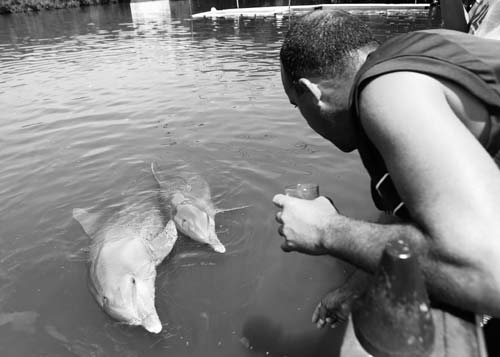
dolphins at the Delfinario
The most interesting attraction is Las Américas (Carretera Las Morlas, tel. 045/66-8482 or 045/66-7388), munitions magnate Irénée Du Pont’s Spanish-style mansion at the far eastern end of Avenida las Américas. The green tile-roofed mansion, which Du Pont named Xanadu, was built in 1926 as a sumptuous winter hideaway (complete with nine-hole golf course). He fitted his house with a Carrara marble floor, great dark wooden eaves and precious timbers, original hardwood antiques, an organ, and a massive wine cellar. On the top floor is a bar (once a ballroom) decorated in Italian rococo. A tapestry in the dining room transcribes the lines of Samuel Coleridge’s poem: In Xanadu did Kubla Khan, A stately pleasure dome decree.
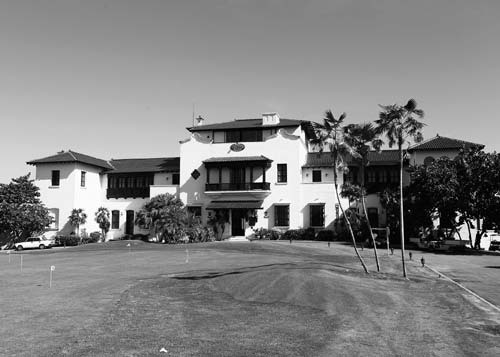
Las Américas/Mansión Xanadú
The six bedrooms can be rented and the restaurant is among Varadero’s finest.
This 450-hectare reserve (tel. 045/61-3594, varahicacos@csam.cu, daily 9am-4:30pm, CUC3) of scrub and woodland at the eastern tip of the peninsula is riddled with limestone caves. The most important is Cueva Ambrosia, accessed by trail from the park entry. It displays pre-Columbian petroglyphs. A second trail leads to Cueva de los Musulmanes (Cave of Muslims), once used as an indigenous tomb (replete with a replica of a cadaver). A separate 17-hectare section surrounds Cueva del Pirata (closed by day, it hosts a cabaret by night).

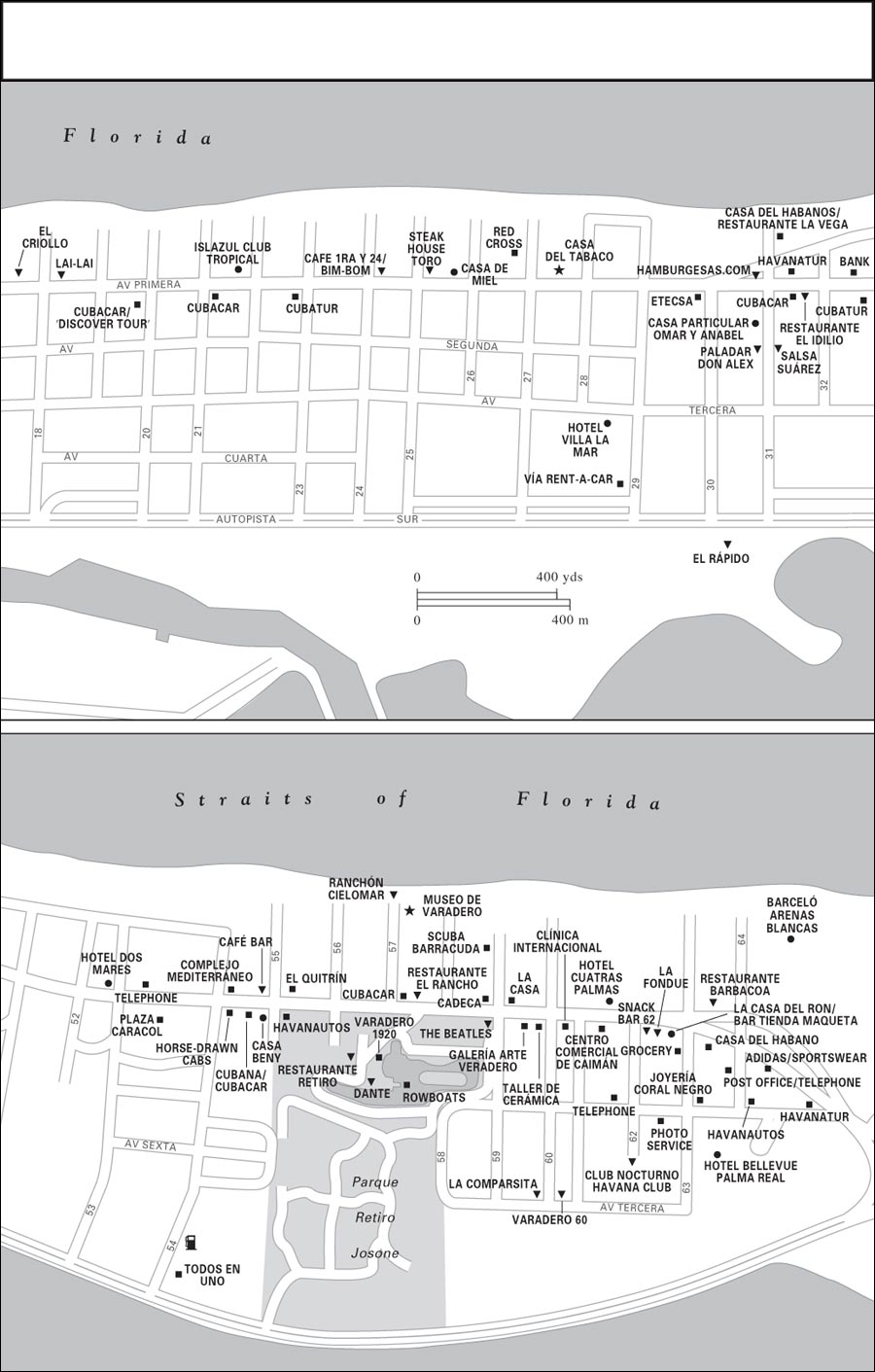
The all-inclusive hotels feature their own bars, cabarets, and entertainment.
Calle 62 Snack Bar (Av. 1ra, esq. 62, tel. 045/66-8167, daily 8am-2am) hosts free live music nightly 9:30pm-midnight, when the plaza fills shoulder to shoulder with tourists.
Other than hotel bars, you’ll find several unremarkable open-air bars along Avenida 1ra. The best is Café Bar (tel. 045/61-3506, daily 9pm-2am), corner of Calle 55. This small, contemporary style bar-café is a great place to enjoy cocktails or cappuccinos on the street-front patio.
Café Bar Benny (Camino del Mar, e/ 12 y 13, 24 hours) is lent ambience by silky jazz riffs on the sound system and occasional live music. The genteel Bar Mirador Casablanca (Carretera Las Morlas, daily 10am-11:45pm), in Mansión Xanadú, has live jazz each afternoon at 4pm.
To sample rums, head to Bar Tienda Maqueta (Av. 1ra, esq. 63, tel. 045/66-8393, daily 9am-9pm), in La Casa del Ron. It serves 75 types of rum and offers sample shots, and there’s a scale model reproduction of Distilería Santa Elena rum factory (1906-1938) with a working railway. Open-air Varadero 1920 (tel. 045/66-7224, daily 9am-9pm) in Parque Retiro Josone specializes in piña coladas (CUC3).
Hotel tour desks sell excursions to the Tropicana Varadero, in Matanzas. It’s not worth the journey, as the Cabaret Continental (Carretera las Américas, tel. 045/66-7038, Tues.-Sun. at 10pm, CUC25, or CUC40 with lobster dinner), at Hotel Varadero International, is a sufficiently satisfying emporium of exotica, with kaleidoscopes of stiletto-heeled showgirls. It’s followed by a disco (CUC10 disco only).
At Cueva del Pirata (Autopista Sur, Km 11, tel. 045/66-7751, Mon.-Sat. at 10pm, CUC8 including all drinks), a swashbuckling cabaret—think eye-patches and cutlasses with g-strings and high heels—takes place in a natural cave. It’s followed by a disco.
La Comparsita (Calle 60, esq. 3ra, tel. 045/66-7415, Wed.-Mon. 11pm-2am, CUC3) also packs ’em in. The open-air venue downstairs hosts a cabaret espectáculo and/or live music, with disco to follow. It has karaoke upstairs.
A free open-air mini-cabaret is hosted nightly at 9:30pm at FM-17 (Av. 1ra y Calle 17, tel. 045/61-4831).
Several all-inclusive hotels have their own discos.
The Casa de la Música (Av. de la Playa y Calle 42, Wed.-Sun. 10:30am-2am, CUC5-10), a classy venue hosting live bands, sizzles to salsa It has a dress code, and ID is needed for entry. It’s the hot spot in town. To learn the moves, head to ABC Academia de Baile (Av. 1ra e/ 334 y 35, tel. 045/61-2623, www.bailaencuba.com, daily 9:30am-7pm), offering two-hour salsa dance classes (CUC15) at 9am, 11:30am, 2:30pm, and 5pm.
Cubans from out of town flock on weekends to the Palacio de la Rumba (Carretera Las Américas, Km 3.5, tel. 045/66-8210, daily 11pm-5am, CUC10 including all drinks), a Western-style disco with dress code; Club Nocturno Havana Club (Calle 62 final, tel. 045/66-7500, daily 10:30pm-3:30am, CUC5), in Centro Comercial Copey; Mambo Club (Carretera Las Morlas, Km 14, tel. 045/66-8565, Tues.-Sun. 11pm-5am, CUC10 including all drinks), outside the Club Amigo Varadero at the east end of the peninsula; and Disco La Bamba (Av. Las Américas, Km 2, tel. 045/66-7560, Wed.-Sun., 11pm-5am, CUC5) in the Hotel Tuxpan.

Varadero’s World Music Festival, each June, attracts artists from throughout Latin America. Cuba’s harlistas (owners of Harley-Davidson motorcycles) roar into town in February for the annual five-day Concentración de Motores Harlistas.
Varadero has a full-blown Centro de Convenciones (Autopista Sur, Km 11, tel. 045/66-8181, comercial@plamer.var.cyt.cu) at Plaza América.
Most resort hotels have tennis courts (nonguests pay a court fee) and include water sports in their room rates. Beach outlets offer snorkeling (CUC3 per hour), sea kayaks and Aquabikes (CUC5 per hour), sailboards (CUC10), and banana-boat rides (CUC5 for 10 minutes). Barracuda Scuba Cuba (Av. 1ra, e/ 58 y 59, tel. 045/61-3481) rents sailboards and kitesurfers and offers parapente (kitesurf) instruction.
Todo En Uno (Autopista Sur y Calle 54, Tues.-Thurs. 6pm-11pm, Fri.-Sun. 11am-11pm, CUC1 per ride) has a 24-hour bolera (bowling alley), plus carros locos (bumper cars) and a small roller coaster. La Bolera (Av. de la Playa, esq. 44) offers 10-pin bowling and pool tables.
You can practice your swing at Varadero Golf Club (Carretera Las Morlas, tel. 045/66-7788, www.varaderogolfclub.com, daily 7am-7pm, greens fees CUC77, club rental CUC55, golf cart CUC53). The 18-hole, par-72 course has a well-stocked pro shop, electric carts, and caddie house, plus restaurant and snack bar. Golf classes are offered. The club sells balls for CUC13 packet of three. An all-inclusive special costs CUC95.
Fans of mini-golf can putt around a crude “crazy golf” course at El Golfito (Av. 1ra e/ 41 y 42, daily 9am-10pm, CUC0.50).
There are more than 30 dive sites off Varadero. The diving for corals here is not as good as elsewhere in Cuba. Most sites are in Parque Marino Cayo Piedras del Norte, a one-hour boat ride. It features an AN-24 aircraft and a 102-meter frigate with missiles. Another good site is the Blue Hole—Ojo de Mégano—an underwater cave east of Varadero. When seas are too rough, divers are transferred to the Playa Girón (Bay of Pigs, a three-hour ride; CUC70).
Marlin S.A. (www.nauticamarlin.com) operates three dive outlets (resort course CUC70, two-tank dive CUC40, night dive CUC55, certification course CUC365). Barracuda Scuba Cuba (Av. 1ra, e/ 58 y 59, tel. 045/61-3481 or 045/66-7072, daily 8am-7pm) is the main outlet; it has a decompression chamber. Scuba Diving Center Acua (Av. Kawama y Calle 1, tel. 045/66-8063, daily 8am-5pm) has Nitrox. Diving Center Marina Chapelín (tel. 045/66-8871, daily 9am-4pm), at Marina Chapelín, is solely for certified divers.
Marlin S.A. offers a snorkeling package to Playa Coral and Cueva de Saturno (daily 9am-2pm), including transfers and lunch.
Many all-inclusive hotels have dive facilities and rent snorkeling gear (CUC5).
Sportfishing trips are offered at the three marinas: Marina Dársena (tel. 045/66-8060), on the Vía Blanca, one kilometer west of Varadero; Marina Chapelín (tel. 045/66-8727), toward the east end of the Autopista Sur; and Marina Gaviota (tel. 045/66-4115), at the far east end of the Autopista. Typical prices are CUC350 for four people, offered daily 9am-4pm.
Marlin runs all water-based activities. You can hop aboard a catamaran at Marina Chapelín for a “Seafari Cayo Blanco” to Cayo Blanco (CUC75 adult, CUC38 child, including lunch) or a snorkeling cruise (CUC30 adult, CUC15 child).
Crafts market line Avenida Primera. For world-class ceramics head to Taller de Cerámica Artística (Av. 1ra y 59, tel. 045/66-7554, daily 9am-7pm). Look for dining sets and individual plates by renowned artists such as Osmany Betancourt, Lázaro Zulueta, and Beatríz Santacana. Next door is Varadero’s Galería de Arte (tel. 045/66-8260, daily 10am-6pm), with wooden statues, paintings, and other artwork.
Centro Comercial de Caimán (Av. 1ra, e/ 61 y 62) has boutiques and cosmetic stores. Adidas and Reebok have sportswear stores on Calle 63. Plaza América has designer boutiques and a duty-free jewelry store. Joyería Coral Negro (Calle 64 y 3ra, tel. 045/61-4870) sells duty-free name-brand watches plus perfumes and quality Cuban jewelry. And El Quitrín (Av. 1ra, e/ 55 y 56, tel. 045/61-2580) sells hand-made guayaberas, lace skirts, and blouses.
The outlets of La Casa del Habano (Av. 1ra y 39, tel. 045/61-4719; Calle 63, e/ 1ra y 3ra, tel. 045/66-7843; and Plaza América, tel. 045/66-8181, ext. 251) are the best-stocked cigar shops in town. Each has a bar and smokers’ lounge and also sells Cuba’s export grade coffees.
La Casa del Ron (Av. 1ra, esq. 63, tel. 045/66-8393, daily 9am-9pm) stocks about 75 rum types.
There are scores of hotels to choose from, but low-price options are few. Air-hotel packages from abroad offer discounts.
Most hotels are all-inclusive; meals, alcoholic beverages, entertainment, and water sports are included in the room rate. Few live up to the standards of all-inclusives elsewhere in the Caribbean; standards are generally higher in foreign-managed hotels than in purely Cuban-managed properties. Hotels become more upscale eastward. The easterly properties are far from the action, which concentrates between Calles 11 and 64. Constantly to-ing and fro-ing can rack up a hefty taxi bill, although the Varadero Bus Tour serves most hotels.
Hotels are categorized according to high-season rates for twin occupancy and arranged west to east. There are more hotels than are listed here.
Casas particulares (private room rentals) were legalized in Varadero in November 2011.
A true stand-out by any gauge, S Casa Beny (Calle 55 #124, e/ 1ra y 2da, tel. 045/61-1700, www.benyhouse.com, CUC105 house or CUC30 rooms) is a lovely 1950s villa set in a landscaped garden with rattan lounge chairs, to the west side of Parque Josone. It has three beautifully furnished air-conditioned independent rooms, each with private bathroom. Perfect for couples and families. Beny Nordarse Cruz and his family are totally professional, and include meals in the rates, including a filling breakfast plus sandwiches for lunch. Parking is secure.
A worthy alternative, S Casa de Omar y Anabel (Calle 31 #104, e/ 1ra y 3ra, tel. 045/61-2587, sherlydayi@yahoo.es, CUC30 or CUC35 for four people) offers a spacious and airy independent air-conditioned apartment with heaps of light. It has one double and two single beds, plus secure parking. The small modern bathroom has hot water, and it has its own kitchen and patio.
For a waterfront option, check out Casa de María Isabel (Av. de la Playa #4303, e/ 43 y 45, tel. 045/61-2363, varaderotorres@gmail.com), with two rooms in a small cottage with secure parking. And Casa de Rodríguez-Díaz (Av. de la Playa #3206, esq. Calle 33, tel. 045/61-3216, CUC25) has one simply furnished room in a breeze-swept house with a broad wrap-around patio with rockers.
All hotels in this price bracket are operated by Islazul (www.islazul.cu).
Recommended as a great bargain, S Motel Punta Blanca (Av. Kawama y Final, tel. 045/66-2410, director@pblanca.m.tz.tur.cu, CUC25 s, CUC36 d low season, CUC33 s, CUC46 d high season) is an extension of Club Karey. Comprising three converted 1950s modernist villas, it has 21 spacious rooms with quasi-functional furnishings, plus a restaurant and bar. You’re at the western tip, away from the crowds.
Hotel Ledo (Av. de la Playa, e/ 43 y 44, tel. 045/61-3206, ledo@varade2.var.cyt.cu, CUC15 s, CUC22 d low season, CUC18 s, CUC26 d high season) is a simple, older property with 20 rooms with local TV and hot water. It has a small restaurant.
A favorite of budget travelers, down-to-earth Hotel Pullman (Av. 1ra y Calle 49, tel. 045/66-2702, recepcion@dmares.islazul.tur.cu, CUC24 s, CUC38 d low season, CUC30 s, CUC48 d high season, including a meager breakfast) occupies a colonial mansion. The 15 rooms have colonial furniture and modern bathrooms; however, not all inspire. It has a small, airy restaurant and a patio bar. Operated jointly with the Pullman, the slightly better Hotel Dos Mares (Av. 1ra and Calle 53, same rates) has a certain bed-and-breakfast charm. It has 34 large, modestly furnished, no-frills rooms and a meager restaurant.
Hotel Herradura (Av. de la Playa, e/ 35 y 36, tel. 045/61-3703, carpeta@herradura.co.cu, CUC25 s, CUC38 d low season, CUC30 s, CUC46 d high season, including breakfast) is a favorite of Germans. This small, intimate option has 75 rooms in apartments.
Others to consider in this price bracket are Villa La Mar (3ra Av., e/ 28 y 30, tel. 045/61-3910, vlamar@enet.cu) and Hotel Allegro Varadero (Vía Blanca, Km 130, tel. 045/66-7380).
Although popular with independent budget travelers, the all-inclusive Hotel Aguazul (Av. 1ra y Calle 13, tel. 045/66-7132, www.islazul.cu, from CUC24 s, CUC38 d low season, CUC48 s, CUC76 d high season) is an uninspired high-rise with 240 rooms and 69 one-bedroom apartments.
Islazul targets Italians at its Hotel Los Delfines (Av. 1ra, e/ 38 y 39, tel. 045/66-7720, direccion@delfines.islazul.tur.cu, CUC48 s, CUC80 d low season, CUC83 s, CUC94 d high season) but is open to all comers. The 89 rooms have a lively contemporary decor. It has four suites and nine junior suites, and is a bargain.
I like the contemporary motif at Gran Caribe’s Hotel & Villas Tortuga (Calle 7, e/ Camino del Mar y Bulevar, tel. 045/61-4747, reservas@villatortuga.gca.tur.cu, from CUC74 s, CUC98 d low season, from CUC94 s, CUC138 d high season), a modern, 280-room, two-story complex centered on a pool. The rooms have heaps of light but no TVs or telephones. You can also rent villas.
Managed as an all-inclusive by the Spanish Roc Hotels group, the Hotel Roc Arenas Doradas (tel. 045/66-8150, arenasdoradas@roc-hotels.com, from CUC64 s, CUC107 d) has 316 rooms set amid 20 acres of landscaped grounds surrounding a freeform pool with sunken pool bar and open-air whirlpool tub. Interior decor is attractive, though this is no Ritz. It has water sports and entertainment.
Islazul’s Hotel Club Tropical (Av. 1ra, e/ 21 y 22, tel. 045/61-3915, reserva@tropical.islazul.tur.cu, CUC74 s, CUC90 d low season, CUC79 s, CUC122 d high season) is an all-inclusive property with 143 rooms and apartments with lively fabrics. Its pleasant lobby bar and elegant restaurant appeal. Otherwise don’t expect much here.
Gran Caribe’s lively, 282-room, all-inclusive Mercure Cuatro Palmas (Av. 1ra, e/ 61 y 62, tel. 045/66-7040, www.mercure.com, CUC75 s, CUC120 d low season, CUC106 s, CCU170 d high season) has a great location at the hub of local action. This popular hotel, run by the French Accor chain, is built on the grounds of Fulgencio Batista’s summer house and is centered on an attractive swimming pool. Nonguests can buy a pass (CUC25 day, CUC25 night). It has apartment units across the street.
Farther east, Cubanacán’s all-inclusive, six-story postmodernist Hotel Tuxpan (Av. Las Américas, Km 2, tel. 045/66-7560, reservas@tuxpan.mtz.tur.cu, from CUC70 s, CUC100 d), boasts a large swimming pool and plenty of recreational facilities, including tennis, beach volleyball, and Hobie Cats, plus the La Bamba disco. Its 232 smallish bedrooms have pleasant travertine-clad bathrooms, but furnishings are uninspired.
Gran Caribe’s all-inclusive Gran Hotel Club Kawama (Av. 1ra, esq. 1, Rpto. Kawama, tel. 045/66-4416, www.kawamahotel.cu, CUC54 s, CUC99 d low season, CUC88 s, CUC112 d high season) dominates the Kawama peninsula on seven hectares and has 235 nicely furnished villas. The resort has several bars and restaurants, plus water sport, bike, scooter, and car rentals.
At the western tip of the peninsula, the Hoteles C Playa Caleta (Av. Kawama y Final, tel. 045/66-7120, reserva@playacaleta.gca.tur.cu) and adjoining Hotel Puntarena (tel. 045/66-7125, reservas@puntarena.gca.tur.cu) offer identical interiors and furnishings. They are also-rans in this price bracket, as is Gran Caribe’s 272-room all-inclusive Hotel Sun Beach (Calle 17 e/ Av. 1ra y 3ra, tel. 045/66-7490).
Families might opt for Breezes Bella Costa (Carretera Las Américas 3.5, tel. 045/66-7210, www.superclubscuba.com, from CUC98 s, CUC155 d low season, from CUC105 s, CUC168 high season), which has a huge pool complex, family suites, a kids’ club, and three specialist restaurants.
Hoteles C Barlovento (Av. 1ra, e/ 10 y 12, tel. 045/66-7140, www.hotelesc.es, CUC88 s, CUC140 d low season, CUC133 s, CUC190 d high season) is a handsome, modern all-inclusive hotel done up in a contemporary interpretation of Spanish-colonial style, with 269 attractively appointed rooms and three suites. The complex surrounds a large pool and offers water sports and entertainment.
The contemporary aesthetic of the all-inclusive Hotel Bellevue Palma Real (Av. 2da y 64, tel. 045/61-4555, jrecep.palmreal@hotetur.com, CUC90 s, CUC120 d low season, CUC114 s, CUC188 d high season) appeals, although this hotel faces over the bay, not the sea. It has 466 rooms with lively decor, two restaurants and three bars, and entertainment. The twin-tiered pool is a highlight.
Gran Caribe’s venerable 1950s-era Hotel Varadero Internacional (Carretera las Américas, tel. 045/66-7038, comercial@gcinter.gca.tur.cu, from CUC80 s, CUC110 d low season, CUC95 s, CUC1130 d high season) successfully combines period decor with an elegant contemporary look. There the good points end, according to many guests. It is slated to be demolished in 2015 to make room for a new 913-room structure: Cabañas del Sol.
Facilities abound at Gran Caribe’s all-inclusive, 245-room Villa Cuba Resort (tel. 045/66-8280, director@vcuba.gca.cma.net, from CUC75 s, CUC129 d low season, from CUC132 s, CUC189 d high season), centered on a beautiful pool complex and offering a range of accommodations, including 23 beachfront chalets with valet service.
For a uniquely romantic experience, check into S Mansión Xanadú (Carretera Las Morlas, tel. 045/66-7388, www.varaderogolfclub.com, CUC132 s, CUC166 d low season, CUC184 s, CUC240 d high season, including breakfast and green fees) at the Varadero Golf Club. This mansion’s six gracious rooms feature marble floors, wrought-iron beds, throw rugs, and all-marble bathrooms with vast walk-in showers. There’s a splendid restaurant.
The best bargain resort in Varadero is also one of my faves: Gaviota’s S Blau Marina Palace Resort (Punta Hicacos Final, tel. 045/66-9966, www.blauhotels.com, from CUC82 s, CUC131 d low season, from CUC139 s, CUC222 d high season), at the very tip of the peninsula. Sprawling along the shore betwixt road and sand dunes, it boasts pleasing architecture and a contemporary quasi-maritime vogue to its 296 junior suites and four suites. All the required facilities are here, including a waterslide augering down to a huge pool.
Meanwhile, there’s not much to choose between the following three-star all-inclusive hotels: Be Live Turquesa (Carretera las Américas, tel. 045/66-8471, www.belivehotels.com); Barceló Arenas Blancas (Calle 64, esq. 1ra, tel. 045/61-4450, rsv@arblcas.gca.tur.cu), the closest all-inclusive to the action; the gracious Iberostar Taínos (Carretera Los Taínos, tel. 045/66-8656, comercial@ibstain.gca.tur.cu); the 444-room Brisas del Caribe (Carretera Las Morlas, Km 22.5, tel. 045/66-8030); the ungainly Club Amigo Varadero Hotel (Carretera Las Morlas, Km 11.5, tel. 045/66-8243, gerencia@granhot.var.cyt.cu); ho-hum Be Live Las Morlas (Av. las Américas, tel. 045/66-7230, www.belivehotels.com); the Iberostar Playa Alameda (tel. 045/66-8822); and Gran Caribe’s Coralia Club Playa de Oro (Carretera Las Morlas, Km 12.5, tel. 045/61-4872, www.accorhotels.com), run by the French Accor chain.
I like Gran Caribe’s all-inclusive S Barceló Solymar Arenas Blancas (Carretera Las Américas y Calle 69, tel. 045/61-4499, www.barcelo.com, from CUC115 s, CUC170 d low season, CUC156 s, CUC240 d high season), a modern resort with a contemporary vogue. Its 525 rooms and 193 bungalows all have exquisite marble-top bathrooms. The resort enfolds a vast pool complex.
The Meliá Las Américas Suites & Golf Resort (tel. 045/66-7600, www.solmeliacuba.com, from CUC225 s, CUC291 d low season, from CUC257 s, CUC368 d high season) boasts a stunning lobby. Arched terraces support a beautiful pool and sundeck overlooking its own private beach. Its 335 rooms and 25 suites feature kitchenettes and small lounges below mezzanine bedrooms with pleasing bamboo and wicker furniture. Meliá’s elegant family-focused 650-room all-inclusive Sol Sirenas Coral Resort (Av. las Américas y Calle K, tel. 045/66-8070, www.melia.com, from CUC125 s, CUC1780 d low season, from CUC159 s, CUC227 d high season) offers a slightly less elegant alternative.
The all-inclusive Meliá Varadero (tel. 045/66-7013, www.solmeliacuba.com, from CUC148 s, CUC211 d low season, from CUC230 s, CUC329 d high season), adjoining Plaza América, also makes a dramatic first impression with 500 rooms and suites in six arms that fan out from a soaring circular atrium with a curtain of vines cascading down from the balconies. The Sol Palmeras (tel. 045/66-7009, www.solmeliacuba.com, from CUC146 s, CUC207 d low season, from CUC212 s, CUC305 d high season), immediately east, is a sprawling and gracious property also entered through a lobby with lush foliage, fountains, and caged birds. It has 375 rooms, 32 suites, and 200 cabinas arrayed around a huge pool with a thatched bar. Better still is the sibling S Paradisus Varadero (Carretera Las Morlas, tel. 045/66-8700, www.solmeliacuba.com, from CUC211 s, CUC322 d low season, from CUC327 s, CUC468 d high season), a beautiful all-inclusive centered on a huge freeform pool. It has 420 exquisitely appointed junior suites and suites, and a garden villa (with butler service) with sponge-washed walls, canopy beds, and wrought-iron and rattan furniture. Facilities include a football court, water polo, archery, volleyball, and tennis courts.
Hotel Meliá Peninsula Varadero (tel. 045/66-8800, www.solmeliacuba.com, from CUC145 s, CUC270 d low season, from CUC241 s, CUC345 d high season), at the far eastern extreme of the peninsula, follows Meliá’s standard format, with a beautiful freeform pool and ice-cream pastels in the 591 rooms in 20 three-story units.
One of the outstanding options, the S Blau Varadero Hotel (Carretera Las Morlas, Km 15, tel. 045/66-7545, www.blauhotels.com, from CUC147 s, CUC224 d low season, from CUC174 s, CUC278 d season) is a dramatic take on a Mayan pyramid. The lobby opens to a dramatic soaring atrium with skylight. A contemporary vogue infuses the guest rooms, with marble-clad bathrooms and spacious balconies. A hip buffet restaurant, an alfresco poolside restaurant, beach grill, a bilevel pool, large kids’ club, and state-of-the-art theater and gym are among the amenities. The similarly priced Iberostar Varadero (Carretera Las Morlas, Km 17.5, tel. 045/66-999, reservas@iberostar.co.cu) gets two thumbs up for its calming mood and creative design subtly infused with Mughal influences. At its heart is a vast freeform pool.
The Royal Hicacos Resort & Spa (Carretera Las Morlas, Km 14, tel. 045/66-8844, pp rates from CUC140 low season, from CUC250 high season) has gone downhill since Jamaica’s Sandals Resorts pulled out and Cuban management took over. Still, it’s visually impressive: The entrance plays on a Polynesian theme, with thatched walkways over landscaped water courses. Lively Caribbean colors meld with rich ocher. It has 404 junior suites with a lovely contemporary feel, but the food leaves much to be desired.
Also in this price bracket, families might consider Breezes Varadero (Carretera Las Américas, Km 3, tel. 045/66-7030, www.superclubscuba.com, North America tel. 800/467-8737, U.K. tel. 01/749-677200), a 270-suite all-inclusive property managed by Jamaica’s SuperClubs chain.
The stupendous, nautically themed, 423-room S Meliá Marina Varadero (Autopista del Sur y Final, tel. 045/66-7330, www.melia-marinavaradero.com, from CUC136 s, CUC205 d all-inclusive low-season, from CUC200 s, CUC282 d room only high season) set a new standard for sophistication when it opened in August 2013. Enfolding the new Marina Gaviota, this luxury four-phase hotel offers all the services of a beach resort. When complete, the largest touristic project in Cuba will also feature 220 luxury apartments for long-term stays, plus a tourist village, full-service spa, Casa de la Música, a bowling alley, dive center, and more. The white-and-turquoise themed rooms all have king beds and Wi-Fi (although only at the luxury level is it free). Its 10 restaurants and nine bars include a tapas bar plus the clubby Don Ernesto (Hemingway themed) for Cuban-fusion fare. Louis XIV-style Casa Burguete serves French-inspired dishes. It offers an all-inclusive option.
At the far east end of the peninsula—and sprawling over a former nature reserve—are several options: the 998-room Hotel Riu Varadero (Autopista Sur, Km 18.5, tel. 045/66-7966, www.riuvaradero.ca.ca); Gaviota’s adjoining and equally sprawling 814-room Iberostar Laguna Azul (Autopista Sur, Km 17, tel. 045/66-7900, commercial@laguna.co.cu); the Meliá-managed Meliá Las Antilles (Carretera Las Morlas, Km 15, tel. 045/66-8470, www.solmeliacuba.com); and Paradisus Princesa del Mar (Autopista Sur, Km 19.5, tel. 045/66-7200).
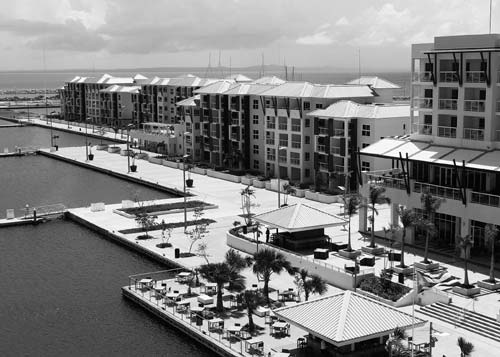
Meliá Marina Varadero
Buffet meals in most all-inclusive hotels are mediocre, while menus in streetside restaurants vary little; deluxe hotels managed by international hotel groups usually offer fare approaching international quality. Private restaurants—paladares—have been permitted since 2011, to everyone’s benefit.
No surprise: The two best restaurants in Varadero are both private. Run by two Cuban brothers, S Varadero 60 (Calle 60, esq. 3ra, tel. 045/61-3986, daily noon-midnight) offers super attentive service and great fare. Choose a shaded outdoor patio or two air-conditioned rooms in this converted mansion, which plays up the 1950s with old ads and posters. All dishes are wood-fired. Start with fried garbanzo (CUC4.50) or cream of seafood soup (CUC5.50), perhaps, followed by shrimp with brandy (CUC11) or steak Roquefort (CUC16), then crêpes with fruit sauce (CUC5.50).
Wow! S Salsa Suárez (Calle 31 #103, tel. 045/61-2009, Wed.-Mon. noon-midnight) rates as one of the finest paladares outside Havana. It has shaded patio dining and a chic elegant air-conditioned option. Yoel Suárez has put years of experience as hotel food and beverage manager to good effect. Gourmands will appreciate the divine dishes on a weekly menu, such as beef carpaccio with capers and olive oil (CUC5.50), seafood cannelloni (CUC8), spiced octopus and mussels (CUC10), and a house special of pork and chicken with onions, pepper, and Roquefort (CUC10). Do leave room for the divine rice pudding with blue cheese and blue curaçao liqueur. Menus are presented on Samsung tablets. Staff in sharp black uniforms are friendly and efficient.
The downhome Paladar Don Alex (Calle 31 #106, e/ 1ra y 2da, no tel., Tues.-Sun. 12:30pm-11pm), opposite Salsa Suárez, is hugely popular. No frills, it serves Italian and criolla fare on a shaded patio of a simple bungalow.
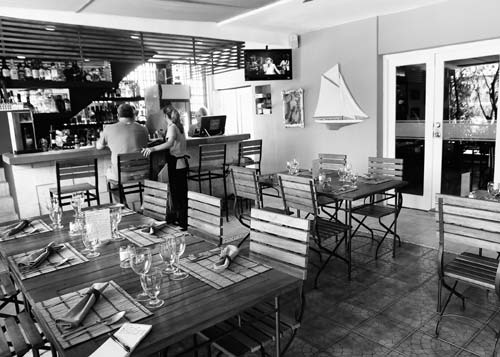
Salsa Suárez
Shrimp in rum is on the menu at Restaurante La Vega (Av. 1ra y 31, tel. 045/61-1431, daily 10am-11pm), where you can dine alfresco with ocean views. And lobster in pepper sauce (CUC6) and beef filet stuffed with bacon (CUC7) feature at Restaurante El Criollo (Av. 1ra y 18, tel. 045/61-4794, daily noon-midnight), a rustic colonial home-turned-restaurant whose menu also includes bean soup (CUC1.50).
Restaurante La Vicaria (Av. 1ra y 38, tel. 045/67-4721, daily noon-10:45pm) offers pleasant alfresco dining under thatch, with the usual roast chicken and fish dishes (CUC5-8). Live music, a 1914 Ford, and a 1955 Oldsmobile add ambience to the Restaurante Esquina Cuba (Av. 1ra 7 y 38, tel. 045/61-4019, daily noon-11pm), an open-air restaurant offering ropa vieja (CUC8).
S Restaurante La Fondue (Av. 1ra, esq. 62, tel. 045/66-7747, daily noon-10:30pm) lists a large range of fondues using Cuban cheeses (CUC7-18). Special cheeses such as Gruyère, Sbrinz, and Gouda cost extra. It also has grilled chicken breast (CUC4.50), lobster (CUC12), and the like, plus a good selection of wines.
The S Restaurante Las Américas (Carretera Las Morlas, tel. 045/66-7388, daily noon-4pm and 7pm-10pm), on the ground floor of Mansión Xanadú, specializes in French-style seafood and meats, such as appetizers of shrimp in sherry vinaigrette (CUC10), and seared goose liver with cabbage and balsamic (CUC11). My seared ahi tuna with green sauce (CUC20) was first-rate; so, too, was my artistically presented tiramisu.
For Italian fare, head to the stylish Dante (Parque Retiro Josone, tel. 045/66-7738, daily 9am-10pm), with views over the lake. It has air-conditioned and open-air options, and features pastas (from CUC6) and pizzas (from CUC4.50) plus a large wine list.
Restaurante Castel Nuevo (Av. 1ra y 11, tel. 045/66-7786, daily 2pm-10pm) has an appropriately Italianate motif and serves spaghetti, pastas, and pizzas (CUC2-10). The best pizza around, however, is at Pizza Nova (upstairs in Plaza América, tel. 045/66-8585, daily 11am-10pm).
Al Capone’s former oceanfront home (built in 1934 on the Kawama Peninsula) is today the atmospheric Casa de Al (Av. Kawama, tel. 045/66-8018, 10am-10pm). Paella (CUC15) and filet mignon (CUC15) feature.
Several beach grills overhang the sands. I like Ranchón Cielo Mar (Calle 57, 24 hours).
El Rancho (tel. 045/61-4760, daily 11am-10pm), opposite the entrance to Parque Retiro Josone, also serves grilled seafood (CUC6-14) in a handsome thatched roadside setting with live musicians. In the park, the antique-filled, classically elegant Restaurante El Retiro (tel. 045/66-7316, daily 3pm-10pm) specializes in lobster dishes (CUC15).
Also specializing in lobster, the hilltop S El Mesón del Quijote (Av. las Américas, tel. 045/66-7796, daily noon-11pm) boasts beamed ceilings, metal lamps, brass plaques, and potted plants on a solarium dining terrace (CUC10-30).
S Restaurant Kike-Kcho (tel. 045/66-4115, reserve@marina.gov.co.cu, daily noon-11pm) fulfills a desire for gourmet seafood in a chic contemporary setting, with the bonus of a superb perch on stilts overlooking Marina Gaviota. It’s known for its grilled lobster dishes, and paella earns rave reviews.
Meanwhile, bulls’ heads on the wall and rawhide seats adorn Steak House Toro (Av. 1ra y 25, tel. 045/66-7145, daily noon-11pm), where you can dine alfresco or inside. The menu runs from veal chops (CUC14) to smoked salmon with capers (CUC6) and mussels in spiced tomato sauce (CUC4.50).
Taking a stab at Oriental ambience and fare, Lai-Lai (Av. 1ra, e/ 18 y 19, tel. 045/66-7793, daily 1pm-9:30pm) features spring rolls, fried rice with shrimp or lobster, and lobster chop suey (CUC5-15).
Midnight snacks? The Complejo Mediterráneo (Av. 1ra, e/ 54 y 55, tel. 045/62460) has two eateries in one: Café Aladdin offers sandwiches 24 hours, and D’Prisa Mediterráneo is a 24-hour open-air grill serving criolla fare and pizzas.
The best sandwiches are served at Pan.Com (Centro Comercial Hicacos, Av. 1ra, e/ 44 y 46, tel. 045/61-4613, daily 9am-9pm). Clean and modern, it would fit well in L.A. or London.
Coppelia (Av. 1ra, e/ 44 y 46, tel. 045/66-7147, daily noon-8pm) sells ice cream at CUC0.50 per tiny scoop.
All the Casa del Habano tobacco shops (Av. 1ra y 39, tel. 045/61-4719; Calle 63, e/ 1ra y 3ra, tel. 045/66-7843; and Plaza América, tel. 045/66-8181, ext. 251; daily 9am-9pm) have espresso bars. Look for me at Café Bar (Av. 1ra esq. Calle 55, tel. 045/61-3506, daily 9pm-2am), a delightful bar-café good for enjoying coffees, teas, and desserts on the small patio.
Doña Neli (Av. 1ra y 43, 24 hours) sells excellent croissants, pastries, and breads. You can buy Western foodstuffs at Grocery Caracol (Calle 15 e/ 1ra y 3ra), Grocery La Trovatta (Av. 1ra y A), and in Plaza América, which has a fully stocked supermarket (daily 8:30am-8pm).
Infotur (Calle 13 y 1ra, tel. 045/66-2966, infovar@enet.cu, daily 8am-5pm) provides tourist information. Alternatively, try Havanatur (1ra y 64, tel. 045/66-7279, daily 8am-5pm) or any of the other tour bureaus.
Euros are accepted as direct payment in Varadero. Banks include Banco Financiero Internacional (Av. Playa y 32, and in Plaza América, Mon.-Fri. 8am-12:30pm and 1:30pm-7pm); Bandec (Av. 1ra y 36, Mon.-Fri. 8am-3pm); and Banco Popular (Av. 1ra y 36, Mon.-Fri. 8am-noon and 1:30pm-4:30pm). The Cadeca foreign exchange bureau is at 1ra and 59; the clerk tried to scam me, as is usual in Cadeca bureaus. Always ask for a receipt!
Fincimex (Av. 1ra y 15, tel. 045/61-4413, Mon.-Sat. 8:30am-noon and 1pm-4pm) represents foreign credit card companies.
Varadero has post offices at Avenida 1ra and Calle 36 (Mon.-Sat. 8am-7pm, Sun. 8am-5:30pm); in the gate house at Avenida las Américas and Calle A (tel. 045/61-4551, 8am-8pm); and at Avenida 1ra and 64 (tel. 045/61-2882, daily 8am-8pm), which also represents DHL, for international courier service.
Etecsa (daily 8:30am-7pm) has international phone and Internet service at Avenida 1ra (esq. 30), which gets crowded; upstairs in Plaza América; and in Centro Comercial Hicacos (Av. 1ra, e/ 44 y 46), where Cubacel (Mon.-Sat. 8am-4pm) has an office for mobile phone service.
Clínica Internacional (Av. 1ra y 61, tel. 045/66-7710 or 045/66-8611, 24 hours, CUC25 per consultation, CUC30 after 4pm, CUC60 for hotel visits) has an ambulance and pharmacy. There are also international pharmacies at Plaza América (tel. 045/66-4610), Avenida Kawama (e/ 3 y 4, tel. 045/61-4470), and Centro Comercial Hicacos (Av. 1ra e/ 44 y 46, tel. 045/61-4610 ext. 145, daily 8am-7pm).
Ópticas Miramar (Av. 1ra, esq. 43, tel. 045/66-7525, daily 8am-7pm) has optician service.
The police station is at Avenida 1ra and 39. The Canadian Consulate (Calle 13 #422, e/ 1ra y Camino del Mar, tel. 045/61-2078, honconvdero@canada.com) also represents Australia.
Asistur (Edificio Marbella, Apto. 6, Av. 1ra esq. 42, tel./fax 045/66-7277, www.asistur.cu, Mon.-Fri. 9am-noon and 1:30pm-4:30pm, Sat. 9am-noon) can provide assistance in an emergency.
Red flags are flown when swimming is dangerous.
The Aeropuerto Juan Gualberto Gómez (tel. 045/61-2133 or 045/61-3036) is 16 kilometers west of Varadero. A taxi will cost about CUC25. Víazul (tel. 045/61-4886, www.viazul.com) buses link the airport and Varadero (CUC6).
You can berth at Marina Marlin Dársena (Vía Blanca, Km 31, tel. 045/66-8060, HF-2790 or VHF-1668) and the full-service Marina Gaviota Varadero (Carretera Las Morlas, Km 21, tel. 045/66-4115, reserve@marinagav.co.cu). The marina has been expanded to have 1,200 slips—one of the Caribbean’s largest—ready for when U.S. travel restrictions are lifted.
Víazul buses (tel. 045/61-4886, www.viazul.com, daily 7am-6pm) arrive and depart the Terminal de Ómnibus Interprovinciales (Calle 36 y Autopista Sur, tel. 045/61-2626), connecting Varadero to Havana, Trinidad, and Santiago de Cuba and cities in between.
Bus #236 departs hourly for Cárdenas from the Terminal Ómnibus de Cárdenas, next to the main bus station, and from Avenida 1ra y Calle 13 (CUC1).
Most hotels have car rental outlets. Main offices include Havanautos (Av. 1ra y Calle 31, tel. 045/61-8196, and Av. 1ra y 64, tel. 045/66-7094), Cubacar (Av. 1ra y 21, tel. 045/66-0332; Av. 1ra, e/ 54 y 55, tel. 045/61-1875; and Av. las Américas y A, tel. 045/61-7336, www.transturvaradero.com), and Vía Rent-a-Car (Calle 29 e/ Autopistas y 3ra, tel. 045/61-4391; and opposite Sol Club Coral). Rex (Calle 36 y Autopista, tel. 045/66-2112) has outlets at the Hotel Iberostar Varadero (tel. 045/66-7739) and the airport (tel. 045/66-7539).
Foreign drivers pay a CUC2 toll on the Vía Blanca, two kilometers west of Varadero.
There are gas stations at Autopista Sur (esq. 17 and esq. 54) and next to Marina Aqua on the Vía Blanca west of town.
A taxi from Havana costs about CUC100 one-way.
You can book excursions farther afield in the major tourist hotels.
Tour agencies include Cubanacán (Calle 24 y Playa, tel. 045/33-7061), Cubatur (Av. 1ra y 33, tel. 045/66-7217), Havanatur (Av. 3ra, e/ 33 y 34, tel. 045/66-7027), and Paradiso (1ra esq. 36, tel. 045/61-2643). Cubacar (Av. 1ra esq. 21, tel. 045/61-1808) has a “Discover Tour” by self-drive Suzuki jeep.
The Varadero Beach Tour (tel. 045/66-8212, comercial.var@transtur.cu, daily 9:30am-5pm, CUC5) double-decker bus runs up and down Avenida 1ra and the length of the peninsula hourly. A full circuit takes two hours. It stops at all the major hotels and you can hop on or off at any of 45 stops. You can buy tickets at hotels; a ticket is valid all day and can be used on the Matanzas Bus Tour.
With pesos you can also hop aboard buses #47 and #48 (20 centavos), which run along Avenida 1ra between Calle 64 and the Santa Marta district, west of the access bridge, and bus #220, on the Autopista Sur.
Cubataxi taxis (tel. 045/61-4444) wait outside tourist hotels. No journey between Calle 1 and Calle 64 should cost more than CUC5. Grancar (tel. 045/66-2454, CUC30 per hour) rents chauffeured prerevolutionary cars.
Coco-taxis, hollow egg-shaped three-wheel vehicles known as huevitos (“little eggs”) locally, cost CUC3 minimum and rent for CUC20 hourly.
Horse-drawn coches ply Avenida 1ra (CUC10 pp, 90 minutes).
Scooters can be rented at most hotels and at Cubacar (tel. 045/61-4555, CUC15 for two hours, CUC25 per day).
From Havana the Autopista runs east-west through south-central Matanzas Province. There are no diversions to distract you until you reach kilometer 142 and the turnoff for Jagüey Grande, Australia, and the Península de Zapata. Alternatively, you can follow the Carretera Central (Route 3-N-1) through a string of dusty old towns or the Circuito Norte coast road, an unremarkable route whose only town of interest is Cárdenas.
The Península de Hicacos forms a natural breakwater protecting Bahía de Cárdenas and the town of Cárdenas (pop. 82,000), a world away from the commercialism of Varadero, 10 kilometers to the northwest.
The city, founded in 1828, developed rapidly as a port serving the prosperous sugar-producing hinterland. Otherwise, Cárdenas has a lackluster history, punctuated by a singular event in 1850, when the Cuban flag was first flown here. That year, a Venezuelan adventurer called Narciso López came ashore with a mercenary army to free the locals from Spanish rule and annex Cuba himself. Although López’s ragtag army captured the town, his meager force failed to rally local support and the invaders beat a hasty retreat. Cárdenas has forever since been called the Flag City.
Most of the town is dilapidated, despite being spruced up for news photographers after hometown boy Elián González was rescued in November 1999 after his mother and 10 others drowned at sea in a bid to flee Cuba for the United States. However, Cárdenas boasts a colonial cathedral and one of the nation’s most impressive museums.
Deplorably potholed streets running northeast-southwest are called avenidas, and streets running northwest-southeast are calles. Those avenidas northwest of Avenida Céspedes—the main boulevard—are suffixed with oeste (west); those to the southeast are este (east). Calles run consecutively from the bay. From Varadero, you enter town along Calle 13 (Calzada) but exit eastward along Calle 14.
This charming tree-shaded plaza, one block east of Avenida Céspedes, is the cultural heart of town. On its east side stands a life-size bronze bust of José Antonio Echevarría, the leader of the anti-Batista Directorio Revolucionario Estudantil (Students Revolutionary Directorate). Echevarría led the students’ assault on Batista’s palace in March 1957; from a captured radio station he announced that Batista had been killed and called for a general strike, but the plug had been pulled and his words never made the air. He was killed later that day in a shootout with police.
Museo Casa Natal de José Antonio Echevarría (Av. 4 Este #560, esq. 12, tel. 045/52-4145, Tues.-Sat. 9am-6pm, Sun. 9am-1am, CUC1 entrance, CUC5 camera, CUC5 guided tour), on the park’s west side, is a two-story house built in 1873. The namesake hero was born in this house in 1932. Downstairs features memorabilia relating to the wars of independence and fight against Batista; upstairs is accessed by a beautiful, hand-carved spiral staircase and honors Echevarría, martyred for the Revolution.
The park’s highlight is the superb, not-to-be-missed Museo Oscar María de Roja (Av. 4 Este, e/ Echevarría y Martí, tel. 045/52-2417), on the south side. Housed in the former home of the lieutenant governor (1861-1878), then the town hall (1878-1966), it’s one of Cuba’s oldest (founded in 1900), finest, and most expansive museums. Fourteen rooms are arrayed by theme, ranging from pre-Columbian culture to armaments, coins, independence, José Martí, and so on. The pièce de résistance is an ornate baroque 19th-century horse-drawn hearse. It was closed for a lengthy restoration at last visit.
On the park’s northeast corner, the Museo del Batalla de Ideas (Av. 6, e/ 11 y 12, tel. 045/52-7599, www.museobatalladeideas.cult.cu, Tues.-Sat. 9am-5pm, Sun. 9am-1pm, CUC2 entrance, CUC5 camera) is housed in the old firehouse (dating from 1872). It is dedicated to Elián González’s father’s fight with Miami’s Cuban-American extremists for custody of his son. Mementos include photographs of the boy at Disneyland wearing Mickey Mouse ears, and even the T-shirt worn by Donato Dalrymple, the angler who plucked the plucky Elián from the sea. A copy of the statue of José Martí holding Elián that stands in front of the U.S. Interests Section in Havana stands in the lobby.
Elián lives with his father, Juan Miguel, at Avenida Céspedes #275.
Tiny Parque Colón (Céspedes, e/ 8 y 9), or Columbus Park, is dominated by the Catedral de la Concepción Inmaculada, a neoclassical cathedral fronted by an impressive statue of Columbus with a globe at his feet (it dates from 1858). The church, built in 1846, has notable stained-glass windows. Catercorner, the former mayor’s mansion, now the near-derelict Hotel Dominica, is a national monument—it was here that Narciso López first raised the Cuban flag. Avenida Céspedes continues north to a bayfront flagpole and monument commemorating the events of 1850.
At the southwest end of Céspedes, a small fortress stands in the central median (Elián González’s home faces the fortress on the east side of the street). There’s a similar fortress at the west end of town, on Avenida 13 (Calzada).
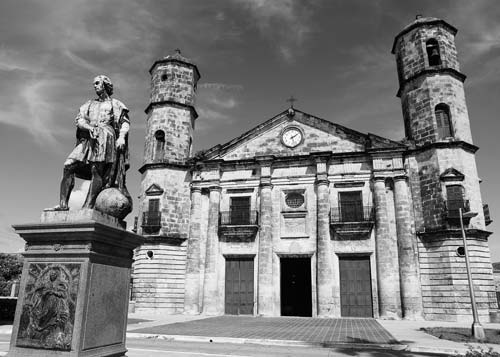
Columbus statue and Catedral de la Concepción Inmaculada
Occupying an entire city block (Av. 3 Oeste, e/ 12 y 13), this two-story plaza is taken up by a farmers market. The historic market building was built of iron in 1856 in the shape of a cross, with a metal domed roof in Islamic style. Its wrought-iron balustrades are held aloft by colonnades. Molokoff refers to the “dome-like” crinoline skirts fashionable in the mid-19th century.
Casas particulares were legalized in Cárdenas in 2011—a good thing, as there are no hotels. Casa Hostal Angelo (Espriu #656 e/ Velásquez y Cristina, tel. 045/52-2451, CUC20) has two clean, simply furnished rooms and delightful hosts who make filling meals.
The best of few options, Paladar Las Delicias (Av. Céspedes #1314, tel. 045/52-7061, daily 11am-11pm) is a delightful private restaurant with uniformed waitresses, live musicians, and home-cooked criolla fare served on a shaded garden patio. Otherwise try Café Espriu (Calle 12, e/ Av. 4 y 6, tel. 045/52-3273, 9:30am-10pm), on the north side of Parque Echevarría. It can usually rustle up a salad, garlic chicken, etc.
There’s a post office (Céspedes y Calle 8, Mon.-Sat. 8am-6pm); an Etecsa telepunto (Céspedes y Calle 13, daily 7am-11pm); Bandec (Céspedes #252, esq. 11); and a Cadeca (Av. 3 Oeste, e/ 12 y 13, daily 8am-5pm), where you change dollars for pesos.
Hospital José M. Aristegui (Calle 13, tel. 045/52-4011, 24 hours daily) is one kilometer west of town.
Buses depart the Terminal de Ómnibus Provincial (Céspedes, e/ 21 y 22, tel. 045/52-1214). Bus #376 runs between Varadero and Cárdenas (30 minutes, CUC1), arriving and departing from Calle 14 and Avenida 8. Also serving Varadero, bus #236 arrives and departs Calle 13 and Avenida 13 Oeste.
A taxi from Varadero costs about CUC15.
For a taxi call Cubataxi (tel. 045/52-3160).
There’s a Cupet gas station at the west end of Calle 13, on the road to Varadero.
San Miguel de los Baños is a little spa town remarkable in its dereliction, hidden deep amid rolling hills. It’s reached via a turnoff from the Carretera Central at Coliseo, 37 kilometers east of Matanzas, at the junction with Route 3-1-1 to Cárdenas. The town’s lofty setting combined with the healing properties of its mineral waters to foster growth last century as a popular health spa. The gentry built villas here in neoclassical and French provincial style, with gingerbread woodwork. Most are in tumbledown condition.
Worth the detour off the Carretera Central is San Miguel de los Baños, a little spa town remarkable in its dereliction, hidden deep amid rolling hills. It’s reached via a turnoff from the Carretera Central at Coliseo, 37 kilometers east of Matanzas, at the junction with Route 3-1-1 to Cárdenas. The town’s lofty setting combined with the healing properties of its mineral waters to foster growth last century as a popular health spa. The gentry built villas here in neoclassical and French provincial style, with gingerbread woodwork. Most are in tumbledown condition.
The Carretera Central continues east past fields of sugarcane via the small agricultural town of Jovellanos. There’s a Cupet gas station at the east end of town.
Colón, 33 kilometers east of Jovellanos, is worth a quick browse. Its colonnaded streets are lined with tumbledown neoclassical structures centered on Parque de Libertad, two blocks south of the main street, Máximo Gómez. At its heart is a life-size, patinated bronze statue of the town’s namesake, Christopher Columbus (Cristóbal Colón). There’s a Cupet gas station on Máximo Gómez and another on Route 3-1-2, which leads south to the Autopista.
Jagüey Grande, one kilometer north of the Autopista at kilometer 142, is an agricultural town encircled by citrus and sugarcane fields. Kilometer 142 is a major hub at the junction (south) for the Península de Zapata and Playa Girón (Bay of Pigs).
Finca Fiesta Campesina (tel. 045/92045, daily 9am-5pm, free, parking CUC1), 200 yards south of the junction, is a contrived “peasant farm” and restaurant popular with tour groups. It has a small zoo with deer, agoutis, snakes, crocodiles, and birds.
There are gas stations 100 meters west of Parador de Carretera and at the junction of Calles 13 and 70, at the south end of Jagüey Grande.
The derelict Central Australia sugar factory looms over the sugarcane fields two kilometers south of Jagüey Grande and one kilometer south of the kilometer 142 junction, on the road to Playa Girón. Fidel Castro set up his military headquarters here on the afternoon of April 15, 1961, during the Bay of Pigs invasion, as he knew that the sugar factory had the only telephone for miles around.
Today it the small Museo Memorial Comandancia FAR (Armed Forces Command Center Memorial Museum, tel. 045/91-2504, Tues.-Sat. 9am-5pm, Sun. 8am-noon, entrance CUC1, guide CUC1, cameras CUC1), which has photographs, the desk and telephone used by Fidel, plus an anti-aircraft gun and uniforms. Alas, the roof collapsed in 2012 and it remains closed at press time, but remains of aircraft shot up in the fighting lie outside.
To the west side are four antique steam trains. One train, dating from 1913, offers 90-minute rides one kilometer into the countryside for groups (tel. 045/91-3224, CUC10 pp).
Cubanacán’s Villa Horizontes Batey Don Pedro (tel. 045/91-2825, comercial@peninsula.cyt.cu, CUC22 s, CUC28 d low season, CUC26 s, CUC34 d high season), adjoining Finca Fiesta Campesina about 200 yards south of the junction at kilometer 142, has two modern air-conditioned cabins plus 10 roomy thatched log cottages with satellite TVs, ceiling fans, large bathrooms, and small kitchenettes. Some have loft bedrooms for four people. Criolla meals are served.
Pío Cua (tel. 045/91-2525, CUC24 s/d, CUC30 including breakfast), south of Jagüey Grande about two kilometers south of the Central Australia factory, has three simply furnished, air-conditioned cabins: one for two people, two each for four people. All have local TV and modern bathrooms. It has an atmospheric restaurant (daily 11:30am-4pm) and bar popular with tour groups.
Parador de Carretera (tel. 045/91-3224, sistema@cienaga.var.cyt.cu), at the kilometer 142 junction, is a café-restaurant (daily 11:30am-10pm) that doubles as a tourist information center (daily 8am-8pm) that arranges guides, sells excursions, and handles bookings for the two hotels.
South of the hamlet of Australia, the sugarcane fields end and the sawgrass begins. This swampland (the Ciénega de Zapata) sweeps south to the Caribbean Sea, smothering the Península de Zapata, a great shoe-shaped extension jutting west into the Golfo de Batabanó. Most of the 4,230-square-kilometer limestone landmass is in Parque Nacional Ciénaga de Zapata, within the larger Reserva de la Biosfera Ciénaga de Zapata.
Zapata extends west of a deep, finger-like bay, the 20-kilometer-long Bahía de Cochinos—Bay of Pigs, named for the local cochinos cimarrones, wild pigs, which once formed a staple diet for local Indians. The bay is renowned as the site for the 1961 invasion, when 1,300 heavily armed, CIA-trained Cuban exiles came ashore to topple the Castro regime.
Route 3-1-18 runs like a plumb line from Australia to Playa Larga, a small fishing village tucked into the head of the bay. Concrete monuments rise along the coast road, each one representing a Cuban soldier (161 in all) who fell during the three-day battle in April 1961.
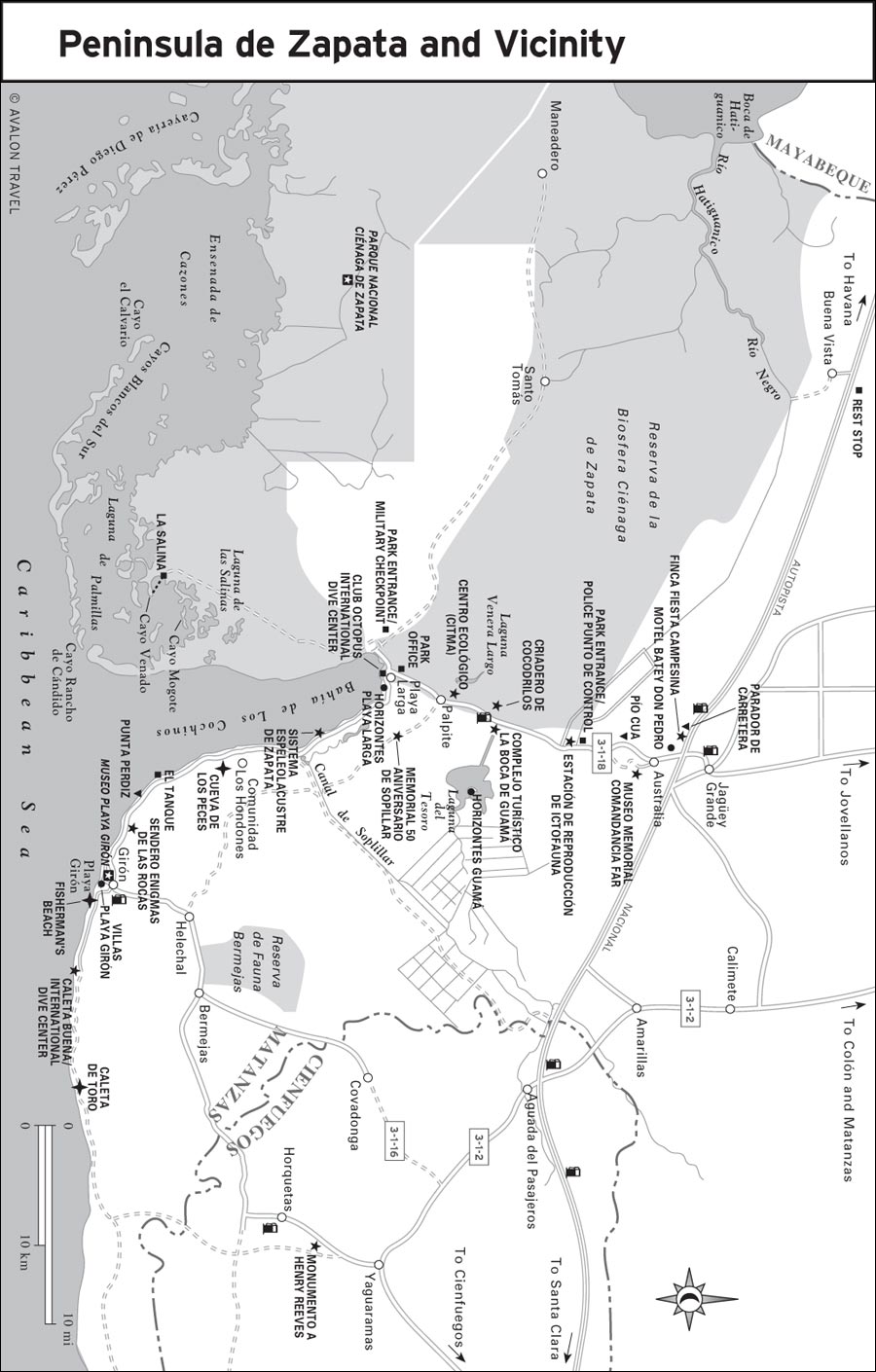
About 8,000 people inhabited the area on the eve of the Revolution, when there were no roads, schools, or electricity. Charcoal-making was the major occupation of the impoverished population. The cenagueros were among the first beneficiaries of the Revolution. The youthful Castro government built highways into the swamps, established a small hospital and schools, and more than 200 teachers from the national literacy campaign arrived. Today carboneros still build their ovens, but their charcoal now goes to town on trucks.
This 628,171-hectare UNESCO Biosphere Reserve enshrines the entire Península de Zapata and surrounding wilderness. The park entrance (no fee) is midway along Route 3-1-18. The entrance to the actual wildlife reserve is at Buena Ventura, two kilometers west of Playa Larga, 32 kilometers south of Australia; a fee applies and a guide is obligatory.
For a perspective on the reserve and its flora and fauna, call in at the Centro Ecológico (tel. 045/91-5539, Mon.-Fri. 8am-4pm, CUC2 including an interpretive trail walk), a visitors ecological center five kilometers south of La Boca de Guamá. It features an exhibition on the region. A separate exhibit details the indigenous heritage.
Mosquitoes are ferocious here; bring repellent!
Complejo Turístico La Boca de Guamá (tel. 045/91-5662), 19 kilometers south of Jagüey Grande, is an important roadside stop at the edge of Laguna del Tesoro. It has restaurants, a souvenir shop, and a gas station. No credit cards are accepted.
Raised wooden platforms provide vistas down over Cuban crocodiles (daily 9:30am-5pm, CUC5) in lagoons. The awesome beasts lie still as death, jaws agape, hoping obviously for a careless visitor to stumble and fall into the pit. Across the road, the Criadero de Cocodrilos (tel. 045/91-5666, daily 7am-7pm, CUC5 adults, CUC3 children) is Cuba’s most important crocodile farm, with more than 4,000 crocodiles. Visitors can learn about the breeding cycle and ecology. When they’re seven years old, some are released to the wild; others are killed for meat and leather.
You can watch potters churning out simple ceramics at the Taller de Cerámica (Mon.-Sat. 9am-6pm).
The 16-square-kilometer Laguna del Tesoro (Treasure Lagoon) is stocked with bass, tarpon, and meter-long manjuarí. The lake, reached via a five-kilometer-long canal from La Boca, is named for the Taíno religious objects that have been raised from the water and are now exhibited at Villa Guamá, on an island in the middle of the lake; this hotel features a mock Taíno village and 32 life-size sculptures depicting Taíno engaged in daily activities. A tour boat leaves La Boca for Villa Guamá on a regular basis (CUC12).
Rowboats (CUC2) can be hired. Fishing trips are offered (tel. 045/91-3224).
Playa Larga, a fishing community at the head of the Bahía de los Cochinos, was one of the two main landing sites during the Bay of Pigs fiasco. The motley village has a military dock and a small beach with a water sports outlet (c/o Rigo, tel. 015227-9637) at Villas Playa Larga (pedal-boat CUC4 per hour, kayaks CUC2, and Hobie Cats CUC10).
A road leads west from Playa Larga two kilometers to the entrance to the Parque Nacional Ciénaga de Zapata.
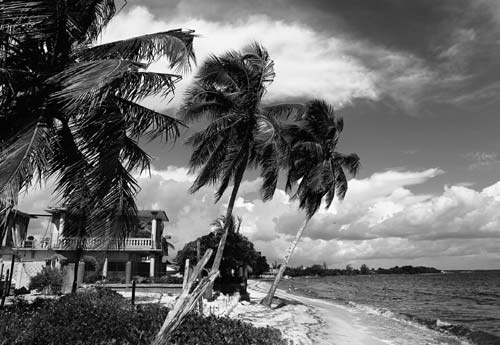
Playa Larga
East of Playa Larga, white beaches extend around the bay. At Caleta del Rosario, about three kilometers from Playa Larga, is a splendid little cove with good swimming. The route is lined with cenotes, limestone sinkholes filled with freshwater. Cueva de los Peces (Cave of Fishes, daily 9am-5pm), 15 kilometers from Playa Larga, is one of the largest cenotes: 70 meters deep, it’s a superb spot for swimming. The beach in front of the cenote offers good snorkeling and diving in jade-colored waters.
Between Playa Larga and Cueva de los Peces, a sign points to Memorial de Sopillar—the deteriorated road leads five kilometers to a rustic bohío commemorating where Fidel celebrated Christmas Eve dinner in 1959.
A little way east of Cueva de los Peces is Bar/Restaurante Punta Perdiz (daily 9am-4pm), a small recreation area with a bird-watching trail. Nearby, the Sistema Espeleolacustre de Zapata investigates marine caverns. It has two one-kilometer-long trails through endemic woodlands. You can swim in cenotes. Guided hikes are offered four times daily.
The Club Octopus International Dive Center (Playa Larga, tel. 045/98-7294) offers dives daily 9am-5pm (CUC25 one dive, CUC40 cave dive and Nitrox dives, CUC365 certification) and rents snorkeling gear (CUC3). Marlin also has a dive outlet at El Tanque, about 10 kilometers south of Playa Larga. It also has guided snorkeling trips to the barrier reef (CUC10).
The 490,417-hectare Ciénaga de Zapata National Park protects Cuba’s most important wetland area. The ecosystems include marsh grass, mangrove thickets, and swamp forest. It is a biological mirror of the Everglades of Florida. Vegetation includes the button tree, so small that it looks like a bonsai. Zapata harbors more than 900 species of flora, 171 species of birds, 31 of reptiles, and 12 of mammals, including the pygmy jutía native to the Zapata swamp, and manatees. The alligator gar (manjuarí), the most primitive of Cuban fish, is found in lagoons, as are crocodiles and caimans.
Refugio de Fauna Bermejas, accessed from north of Playa Girón, is a separate section of the park (the entrance fee is payable in the Hotel Playa Larga) with a bird-watching trail.
Of Cuba’s 22 endemic bird species, 18 inhabit the marshes. Zapata protects the bee hummingbird (the world’s smallest bird) as well as an endemic tanager, the Zapata sparrow, Zapata rail, Zapata wren, the Cuban trogon or tocororo, and Cuban parrots. Zapata is also a favorite stop for tens of thousands of migratory birds. The best time is October to April, when migrants flock in, among them sandhill cranes and wood ibis.
The best spots for bird-watching are Laguna de las Salinas, a 36,400-hectare expanse of flats, watercourses, and islets on the southern shores of Zapata and where flamingos flock in their thousands; and also around Santo Tomás, about 30 kilometers west of Playa Larga (CUC10 pp by jeep, including guide).
Zapata has been isolated from fishing pressure since 1959, making this huge reserve as close to a virgin fishery as one can find in today’s world. There are said to be places where you can catch the fish with your bare hands, the way the indigenous people did. There are two distinct areas for fishing—the Río Hatiguanico (for tarpon) and Laguna de las Salinas (for bonefish). Several well-traveled anglers consider Las Salinas the standard by which all other locations should be judged worldwide. Bonefishing is most productive late fall through June; tarpon fishing peaks late February/early March through June. Underpowered skiffs mean long periods getting to the best lagoons.
Access is by permit only (CUC12 pp, including an obligatory guide), obtained from the Oficina Parque Nacional (tel. 045/98-7249, sistema@cienaga.var.cyt.cu, daily 8am-4:30pm), beside the highway in Playa Larga. You can also hire a guide and arrange hikes, bird-watching, fishing (CUC170 full-day), and crocodile tours through Parador de Carretera, at kilometer 142. You’ll need your own vehicle (4WD recommended), with a spare seat for the guide.
Laguna Tesoro was one of Castro’s favorite fishing spots. The Cuban leader spent many weekends in a cabina that became known as “Fidel’s Key.” One day he supposedly announced, “We’re going to build a Tahitian village here!” And they did. The result is a replica Taíno village, now Horizontes Guamá (tel. 045/91-9100, CUC24 s, CUC30 d), with 13 tiny islands connected by hanging bridges. At last visit, the 44 thatched, air-conditioned bungalows on stilts had been rebuilt after yet another trashing by hurricanes. They have TVs (why?). There’s a swimming pool. Bring bug spray!
Several dozen homes in Playa Larga rent rooms. The most sophisticated is S Hostal Mayito (tel. 043/98-7428 or 5368-9739, hostalcasamayito@gmail.com, CUC30-35 including bike use), with stones walls and modern furnishings. Three upstairs air-conditioned rooms each have a fridge and fans; one good for families has a double bed and a murphy bed. The English-speaking owner rents snorkel gear.
The oceanfront Hostal Kiki (Batey Caletón, Playa Larga, tel. 45/98-7404) is also spectacular.
Also consider Villa Juana (Batey Caletón, Playa Larga, tel. 045/98-7308, caribesolpz@yahoo.es, CUC20-25), a pleasant home with modern amenities. The single air-conditioned room with its own refrigerator, fan, and modern bathroom opens to a charming garden patio where meals are served. The family is a delight.
The overpriced beachfront Horizontes Playa Larga (Batey Caletón, Playa Larga, tel. 045/98-7241, CUC45 s, CUC64 d low season, CUC51 s, CUC72 d high season, including breakfast) has 68 spacious, modestly furnished, air-conditioned cabinas with basic kitchenettes. The restaurant is elegant and the swimming pool lively. It has water sports.
At La Boca, the modestly elegant Colibrí Restaurant (daily 9:30am-5pm, CUC5-12) serves criolla fare, including crocodile (CUC10) and lobster (CUC11). The open-air Bar y Restaurante La Rionda (daily 9:30am-8pm, CUC5-12), adjacent, is nicer on cooler days.
Cueva de los Peces (daily 8am-5pm, CUC5-12), overhanging the cenote, has a thatched restaurant serving criolla fare.
The 8am Havana-Trinidad Víazul and 3pm Trinidad-Havana buses travel via Playa Larga and Girón. Transtur operates the hop-on/hop-off Guamá Bus Tour (tel. 045/98-7212, commercial@peninsula.cyt.cu, CUC3) twice daily between Guamá (departs at 11am and 3:30pm) and Caleta Buena via Playa Larga and Playa Girón (departs 8:30am and 1:30pm), stopping at key sites en route.
Tour agencies in Havana and Varadero offer excursions.
Finally you arrive at the spot where socialism and capitalism slugged it out, and what do you find? Vacationers from cool climates, lathered with suntan oil, splashing in the shallows where 30-odd years before blood and bullets mingled with the sand on the surf.
Playa Girón is a small, single-road pueblo of a few hundred people. It was named in honor of Gilbert Girón, a French pirate captured here. The community lies inland of the hotel and beautiful white-sand beach, which is enclosed within a concrete barrier (rompeola) that protects against any future wave of CIA-backed anti-Castroites foolish enough to come ashore. Nonetheless, it’s a carbuncle on the coast and made worse by the military watchtower to the east end. (The hotel takes up much of the beach, but go around it to the east for the public beach.)
The paved coastal highway (Route 3-1-16) turns inland at Puente Bacunayagua and runs 39 kilometers through scrubland to Yaguaramas (forsake the road from Covavango; it’s terribly deteriorated). Here, it connects with Route 3-1-2, which runs north to the Autopista and east to Cienfuegos. About five kilometers south of Yaguaramas, the Monumento a Henry Earl Reeves marks the site where the eponymous U.S. mercenary, who rose to be a general in the Cuban army (he is known to Cubans as “El Inglesito”), was killed in 1876 during the Ten Years War.
You can hire a horse-drawn coche to take you to Sendero Enigma de las Rocas for a two-hour guided hike to a cenote.
This small museum (tel. 045/98-4122, daily 9am-5pm, entrance CUC2, guide CUC1, cameras CUC1), outside the entrance to Villas Playa Girón, gives an accurate portrayal of the Bay of Pigs invasion. Black-and-white photographs confirm the poverty of the local peasantry before the Revolution. Others profile the events culminating in the act to which the museum is dedicated—the invasion of April 15, 1961, by 1,297 CIA-trained Cubans.
Maps trace the evolution of the 72-hour battle. There are photographs, including gory pictures of civilians caught in the midst of explosions, and of all the martyrs—the “Heroes de Girón”—killed in the fighting (the youngest, Nelson Fernández Estévez, was only 16 years old; the oldest, Juan Ruíz Serna, was 60). And, of course, Fidel is there, leaping from a T-34 tank. Other displays include weapons and a Sea Fury fighter-aircraft, which sits on the forecourt alongside Soviet T-34 and SAU-100 tanks.
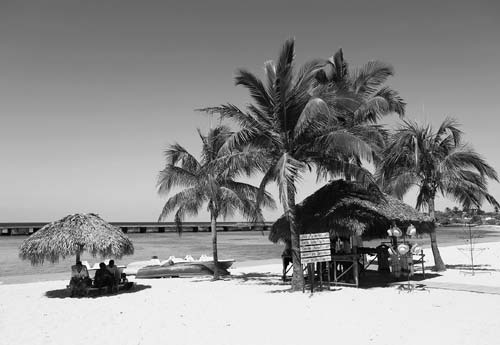
Playa Girón
A 15-minute black-and-white documentary is shown in the cinema to the rear of the museum (CUC1).
This exquisite cove (tel. 045/91-5589, daily 10am-5pm, CUC15), eight kilometers east of Playa Girón, contains a natural pool good for swimming. There are pocket-size beaches atop the coral platform, with red-tiled ranchitas for shade and lounge chairs for sunning. The seabed is a multicolored garden of coral and sponges, ideal for snorkeling (CUC3 one hour, CUC5 per day) and diving (CUC25). Lunch is served 12:30pm-3pm (the bar is open until 5pm).
There are more than two dozen casas particulares, most being similar in style and price (CUC20). The standout is S Hostal Luis (tel. 045/98-4258, hostaluis@yahoo.es, CUC25-30), run by a gracious couple, Luis García Padrón and his wife Marleyn, with four well-lit, air-conditioned rooms in two buildings; all have modern bathrooms, and one unit is a two-room apartment. It has parking and a laundry.
I also like Villa Merci (tel. 045/98-4263, lelys.mtz@infomed.sld.cu, CUC20), set in a lovely garden (with secure parking) on the road to Caletas Buena, 300 meters east of the main junction in town. Mercedes, the owner, is a delightful hostess.
Cubanacán’s lackluster beachfront Villas Playa Girón (tel. 045/98-4110, www.hotelescubanacan.com, from CUC37 s, CUC54 d all-inclusive) has 282 rooms in villas scattered amid lawns. Some have shared bathrooms; all have satellite TV, telephone, and fridge, but furnishings are basic. The restaurant’s buffet is pathetic. It’s popular with budget package tourists, including Cubans.
There’s a pharmacy, and a post office is opposite the museum.
Víazul (www.viazul.com) buses depart for Girón from Havana at 8:15am, arriving at 11:30am and continuing to Cienfuegos and Trinidad; from Trinidad at 2:40pm, arriving at 6pm en route to Havana; from Varadero at 2pm, arriving 4pm en route to Trinidad; and from Trinidad at 8:40am, arriving in Girón at noon en route to Varadero.
A camion departs Girón daily at 5am for Cienfuegos. A bus (guagua) departs Jagüey Grande at 8am for Girón; it returns at 6am. A bus runs from Matanzas Monday-Friday at 1pm, departing Girón for Matanzas at 4:20am.
Cubacar (tel. 045/98-4126) has a rental agency (scooters CUC13 two hours or CUC25 full day; cars from CUC60 with insurance). There’s a gas station adjacent.